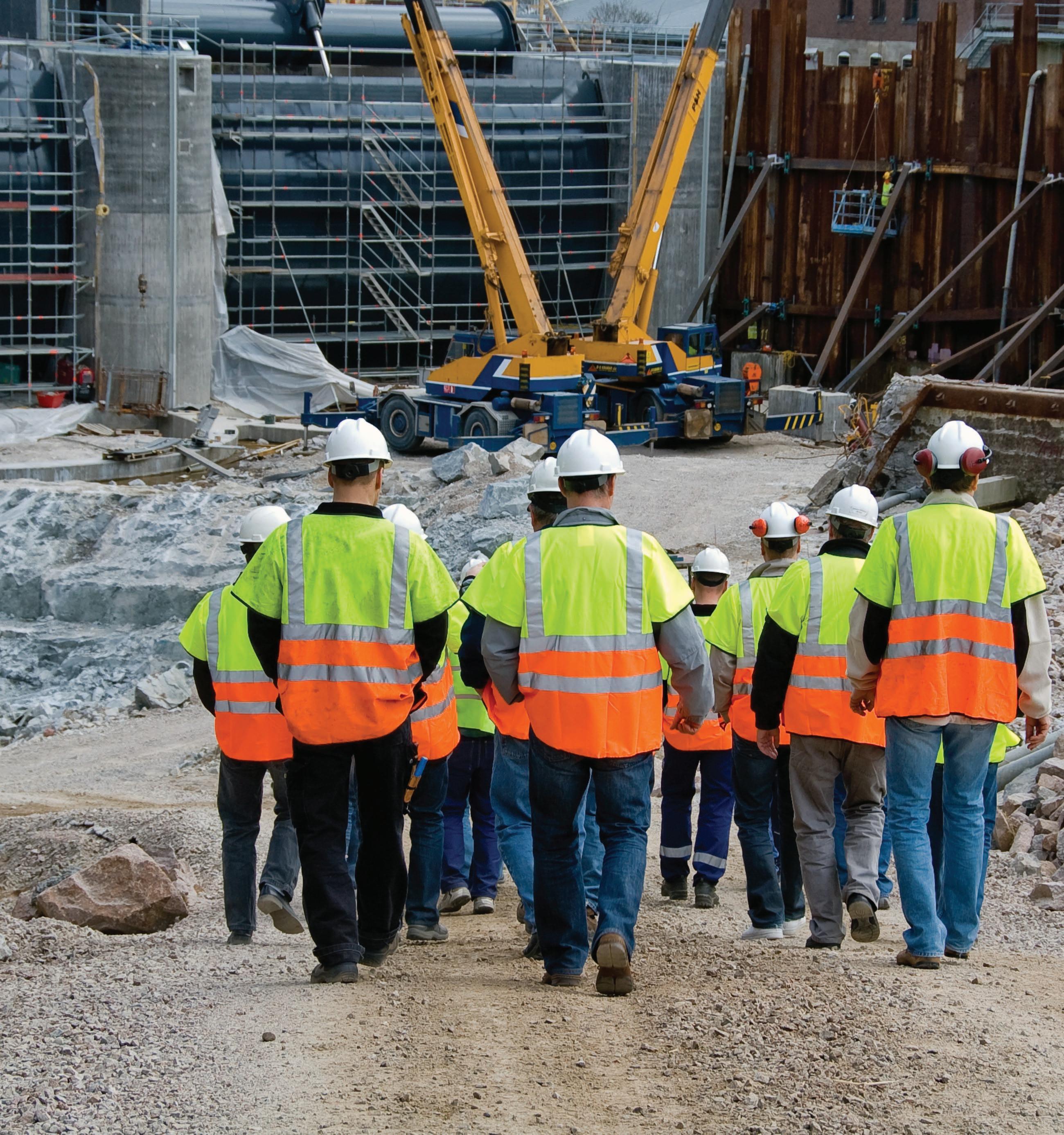
2023 | NORTHWEST THE OFFICIAL PUBLICATION OF THE NORTHWEST CHAPTER OF THE NORTH AMERICAN SOCIETY FOR TRENCHLESS TECHNOLOGY CITY OF REGINA CIPP LINING CONTRACT | GEOMATICS, INTEGRATED SENSORS AND 3D IMAGING FALL/WINTER Return Undeliverable Canadian Items to: 2020 Portage Ave, Winnipeg, MB R3J 0K4 PM #40065075 COMING TOGETHER TO TRAIN AND DEVELOP THE FUTURE WORKFORCE
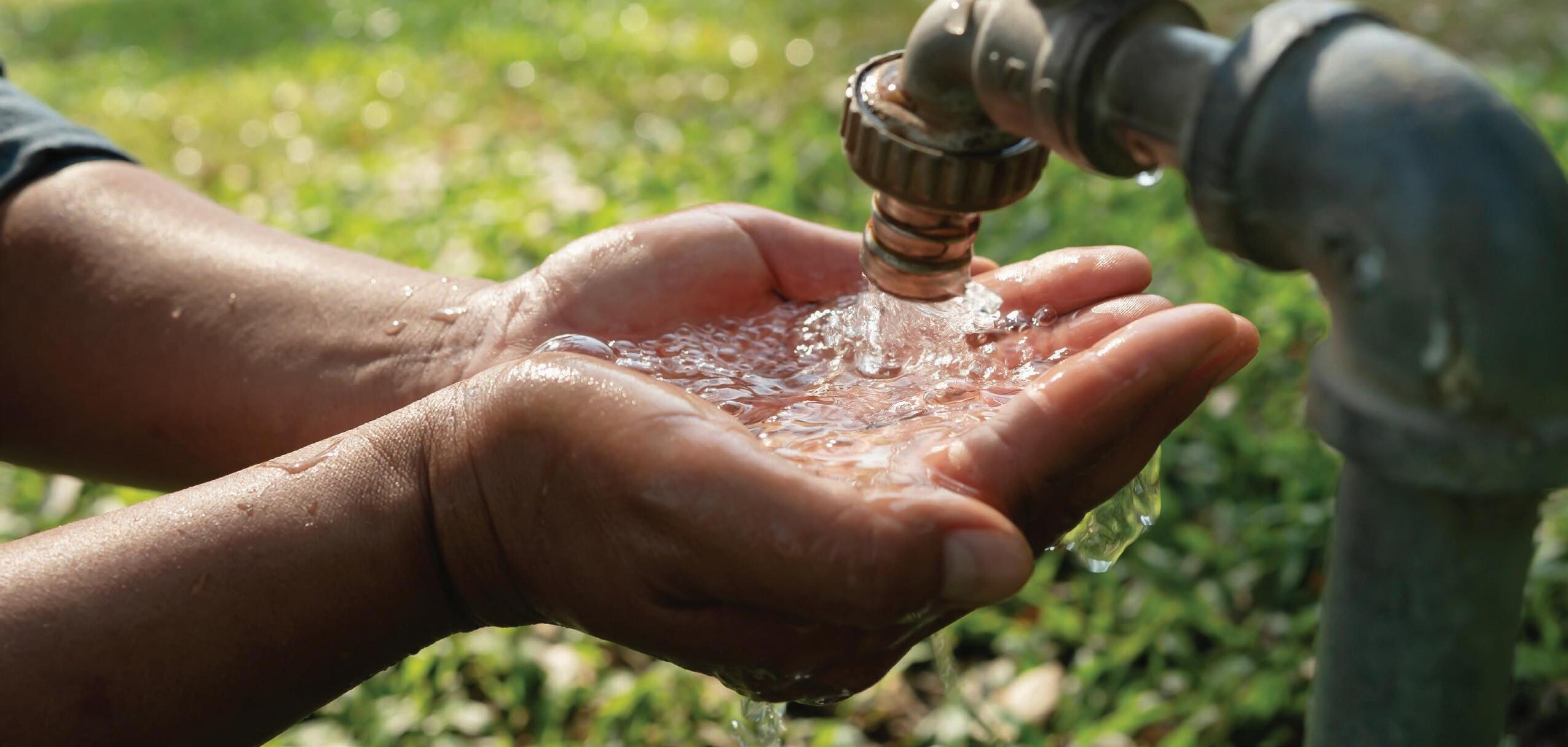






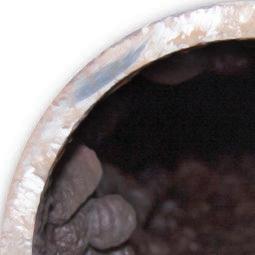


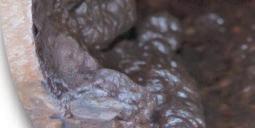





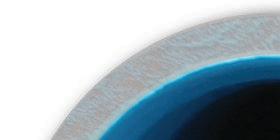




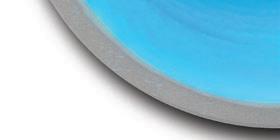
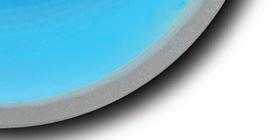





Bring New Life Old Pipes To Affordably & Sustainably Restore service in as little as one day 1.855.652.0812 www.induracoat.com Authorized Applicator Advantages of the SIPP In-Situ Lining Process • Significantly extends asset life and improves water quality • Prevents internal corrosion and tuberculation • Helps reduce water loss and repair certain cracks and pinholes • Helps restore internal pipe diameter and C factor • Allows for same-day return to service Before After Spray-In-Place-Pipe Rehabilitation Resiline 320 is projected to meet properties of ASTM F1216-16 after 50 years.
NASTT-NW BOARD
GEORGE BONTUS Aegion Corporation
PAST CHAIR
RAVEN
www.kelman.ca
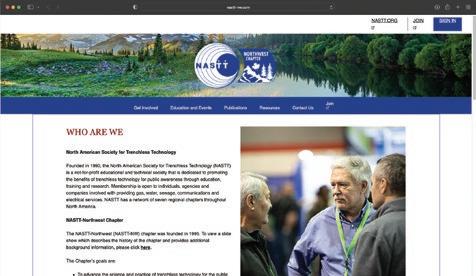
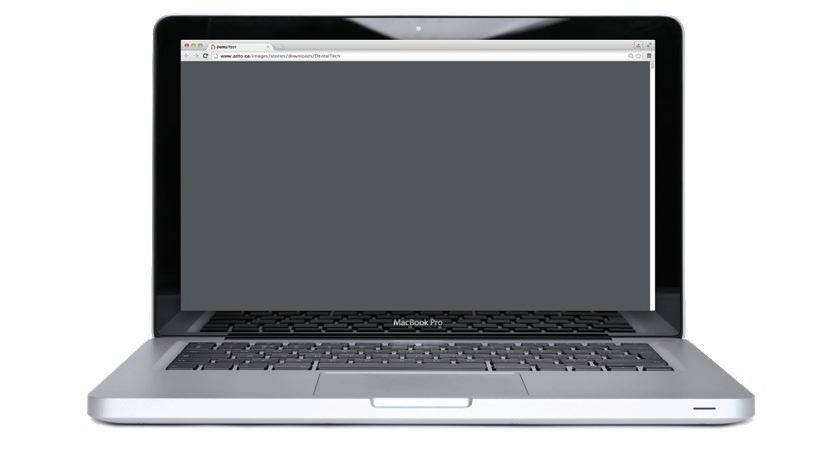
Managing Editor: Julia Waterer
Design/Layout: Tracy Toutant
Marketing Manager: Chad Morrison
Advertising Coordinator: Stefanie Hagidiakow

©2023 Craig Kelman & Associates Ltd.
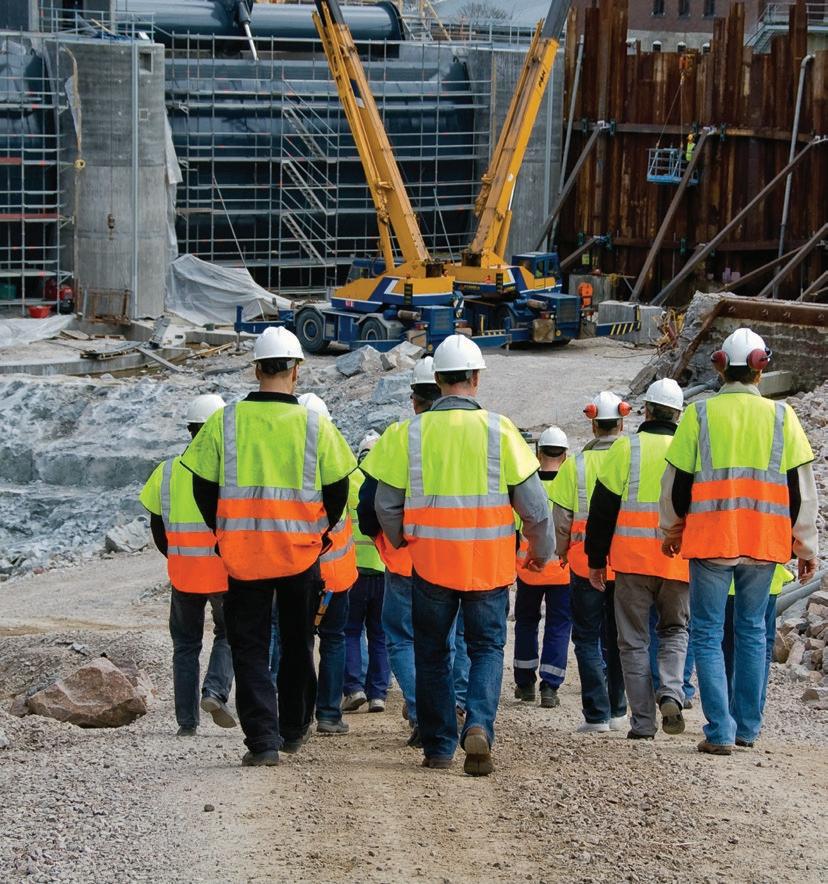
All rights reserved. The contents of this publication, which does not necessarily reflect the opinion of the publisher or the association, may not be reproduced by any means, in whole or in part, without the prior written consent of the Northwest Chapter of the North American Society for Trenchless Technology.
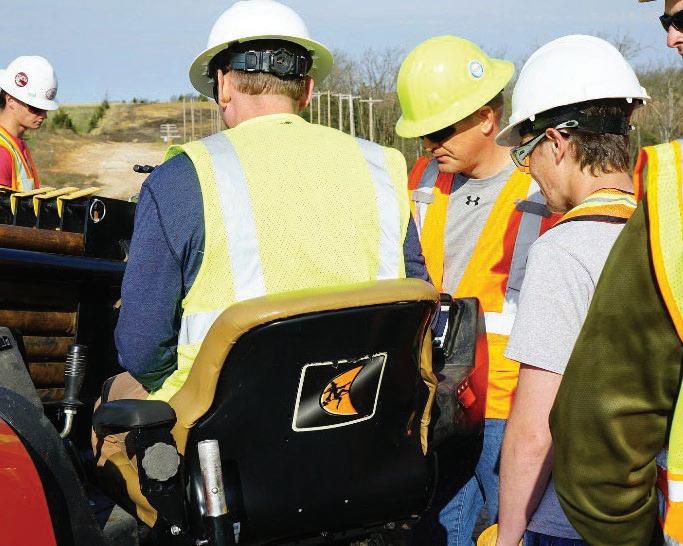
IN THIS ISSUE: MESSAGE FROM THE NASTT-NW CHAIR 5 MESSAGE FROM NASTT 6 ADVERTISER PRODUCT & SERVICE CENTRE 29 DEPARTMENTS: THE OFFICIAL PUBLICATION OF THE NORTHWEST CHAPTER OF THE NORTH AMERICAN SOCIETY FOR TRENCHLESS TECHNOLOGY 2023 | NORTHWEST ON THE COVER: Construction workers going to work | dreamstime.com 2023 | NORTHWEST THE OFFICIAL PUBLICATION OF THE NORTHWEST CHAPTER OF THE NORTH AMERICAN SOCIETY FOR TRENCHLESS TECHNOLOGY CITY OF REGINA CIPP LINING CONTRACT GEOMATICS, INTEGRATED SENSORS AND 3D IMAGING FALL/WINTER Return Undeliverable Canadian Items to: 2020 Portage Ave, Winnipeg, MB R3J 0K4 PM #40065075 COMING TOGETHER TO TRAIN AND DEVELOP THE FUTURE WORKFORCE
CHAIR
OF DIRECTORS
SHANE COOPER AECOM VICE-CHAIR
EPCOR DIRECTOR
Associated
MAGAZINE
SHARMA City of Selkirk Return Undeliverable Canadian Items to: 2020 Portage Ave, Winnipeg, MB R3J 0K4 Publication Mail Agreement #40065075 9 NASTT-NW. COM VIEW US ONLINE 7 NASTT 2024 NO-DIG MUNICIPAL AND PUBLIC UTILITY SCHOLARSHIP PROGRAM 9 2020/2021 CITY OF REGINA CIPP LINING CONTRACT 17 GEOMATICS, INTEGRATED SENSORS AND 3D IMAGING 21 CALL FOR SUBMISSIONS 22 COMING TOGETHER TO TRAIN AND DEVELOP THE FUTURE WORKFORCE 22 NASTT-NW.COM | 3
SHARMA City of Selkirk TREASURER KEITH MOGGACH Royal Building Products SECRETARY CHAOSHI HU
ALI BAYAT University of Alberta DIRECTOR CRAIG PASS
Engineering
COMMITTEE RAVEN


4 | NASTT-NW JOURNAL | Fall/Winter 2023 BACK TO CONTENTS Is your company celebrating an anniversary, expansion, relocation or management change? 866-985-9788 chad@kelman.ca Contact Chad Morrison today to find out how to get an advertising-funded, no-cost corporate profile for your company. VISIT US ONLINE WWW.NASTT-NW.COM
As the summer winds down, I hope everyone is looking forward to No Dig North in Edmonton, October 23–25. There will be lots of great presentations and talks, and I look forward to meeting everyone at the Networking Reception held Monday night. This will be a big opportunity for all to meet and greet other professionals in the industry.
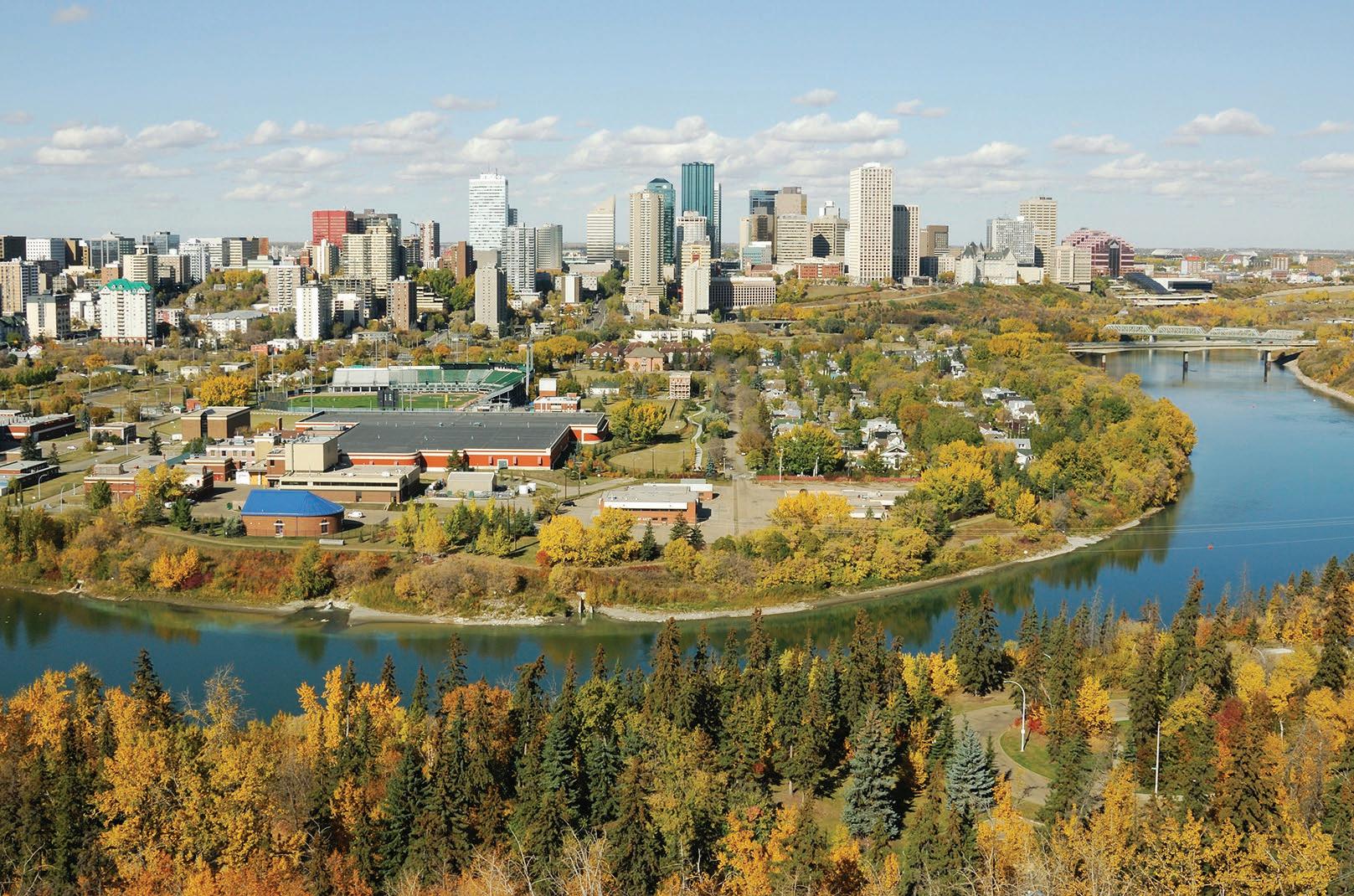
The Northwest Chapter has developed a new student chapter at Red River Polytech in Winnipeg. This is the third chapter in Canada, after Queen’s University and University of Alberta. We are looking for sponsors to lead chapters at other Universities and Technical Schools. Programs like these are key to the future of the industry, driving new young professionals into the skilled trades.
CUIIC’s Safety Academy will be held in Edmonton November 29–30, 2023. Safety Academy experts will present a two-day course that is designed to equip attendees with knowledge related to underground construction safety, regulation, challenges and innovation. Attendees will get the chance to learn about the pressing issues and most up-todate policies related to a wide range of underground construction safety topics.
The Northwest Chapter will also be establishing local committees in the larger centers in our area. Consider working with our Chapter to encourage spreading technical knowledge on trenchless technology, and take the opportunity to network with others across the region.
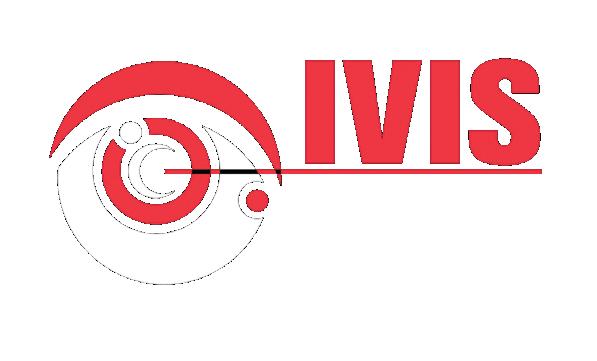
 George Bontus, P.Eng. Chair, NASTT Northwest Chapter
George Bontus, P.Eng. Chair, NASTT Northwest Chapter
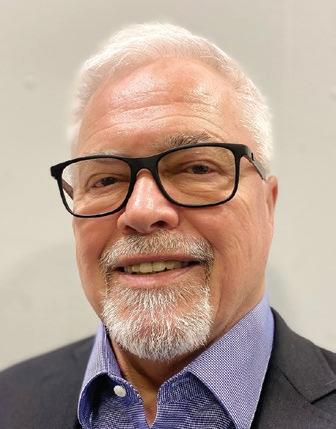
MESSAGE FROM THE NW CHAIR
ENCOURAGING CONNECTIONS 1-866-976-2626 www.ivisconstructioninc.com The Right People, The Right Equipment, The Right Choice Servicing the Underground Infrastructure Since 1996 • Maintenance Programs • Secondary Utility Locates/GPR • High pressure flushing/vacuum • CCTV (camera) inspections of sewer lines • Lift Stations-maintenance & refurbishing • Hydro excavating utilities, piles, trenching • High Rail Unit for hydrovac, flushing, vacuum • Pipe bursting/open cut sewer replacement • Relining of sewer lines, storm lines, laterals, T-liners, manholes and lift stations and potable water lines Residential • Commercial • Municipalities • Industrial YOUR ONE STOP SHOP NASTT-NW.COM | 5 BACK TO CONTENTS
NO-DIG NORTH 2023 HEADS TO EDMONTON
Hello Northwest Chapter Members and Associates! Earlier this year we held the NASTT 2023 No-Dig Show held in Portland, Oregon, which was a great success and a wonderful opportunity to see our industry friends and colleagues while we celebrated all things trenchless. And now we are excited to switch gears and head to Edmonton for the 2023 No-Dig North conference, October 23–25! No-Dig North is hosted by the Canadian Chapters of NASTT, and your Northwest Chapter is a big part of why the trenchless community in this area is thriving. No-Dig North offers three full days of training, education, and networking. This is a must-attend event for everyone in Canada and nearby portions of the US. Please visit nodignorth.ca for details!
In the coming months we have many additional events planned to bring the underground infrastructure community together. Our ever-popular NASTT Good Practices Courses are being held both virtually and in-person throughout the year. Visit nastt.org/training/events to find a course that fits your schedule.
We are also already planning for the 2024 No-Dig Show which meets in Providence, Rhode Island next April. Providence is a great central location within the heavily populated northeast corridor, just a short drive from Boston, and within reasonable drive from Philadelphia, New York City, Hartford, and many other cities in between. Our Show motto is ‘Green Above, Green Below’ and it is important that our industry is a steward of our precious natural resources, so we welcome the opportunity to provide a forum for learning about the latest in innovative trenchless products and services that help us all accomplish that lofty goal. Learn more about all the No-Dig Show has to offer at nodigshow.com.
If you have attended a NASTT event (national or regional) you probably left feeling excited and eager to get more involved. I ask that you consider getting engaged in one of the many NASTT committees that focus on a wide variety of topics. Some of our committees that are always looking for fresh ideas and new members are the Training and Publications Committee, the individual topic Good Practices Course Sub-Committees, the Educational Fund Auction Committee, the No-Dig Show and No-Dig North Planning Committees and Technical Program Committees. There are many opportunities for you to consider where your professional expertise can be put to use through networking with other motivated volunteers. With education as our goal and a strong drive to provide valuable, accessible learning tools to our community, we are proud of our continued growth as both an organization and as an industry. Our volunteers and committee members are what keep us moving in the right direction.
For more information on our organization, committees, and member benefits, visit our website at nastt.org and please feel free to contact us at info@nastt.org.
We look forward to seeing you at a regional or national conference or training event soon! And we hope you are planning to join us in Edmonton for No-Dig North 2023, October 23–25.
 Matthew Wallin, PE NASTT Chair
Matthew Wallin, PE NASTT Chair
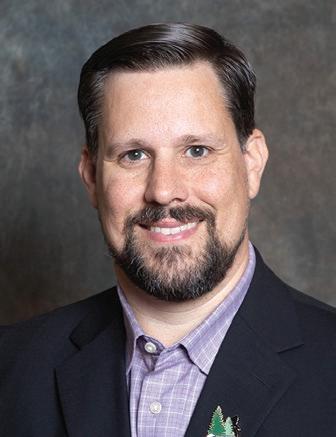
MESSAGE FROM NASTT
6 | NASTT-NW JOURNAL | Fall/Winter 2023 BACK TO CONTENTS
“With education as our goal and a strong drive to provide valuable, accessible learning tools to our community, we are proud of our continued growth as both an organization and as an industry.”
Scholarship Program
The NASTT No-Dig Show Municipal & Public Utility Scholarship Award has been established to provide education and training for North American municipalities, government agencies and utility owners who have limited or no travel funds due to restricted budgets.
Selected applicants will be awarded complimentary full conference registration to the NASTT 2024 No-Dig Show in Providence, Rhode Island, April 14-18, 2024. One day conference registrations will also be available. Registration includes full access to all exhibits and technical paper sessions… all you have to do is get yourself to the conference! Selected applicants will also be eligible to receive overnight accommodations. Selection based on responses to the application as well as need.


The
No-Dig Show is owned by the North American Society for Trenchless Technology (NASTT), a not-for-profit educational and technical society established in 1990 to promote trenchless technology for the public benefit. For more information about NASTT, visit our website at nastt.org.
A P P LY T O D AY ! A p p l i c a t i o n d e a d l i n e i s N o v e m b e r 1 , 2 0 2 3 . NETWORKING EVENTS | EXHIBIT HALL | TECHNICAL SESSIONS T H E N A S T T 2 0 2 4 N O - D I G S H O W M U N I C I P A L & P U B L I C U T I L I T Y
Visit nodigshow.com to learn more
APROMUD® grades developed by APROTEK are synthetic organic polymers (not reagents) APROMUD® quickly stabilize dredge sediments, aqueous waste streams, biosolids and industrial sludges in minutes. This innovative technology and know-how turns liquid waste into a stackable solid in real time. The result:
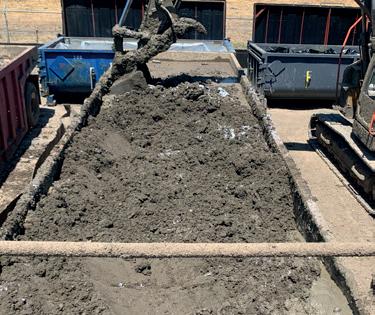
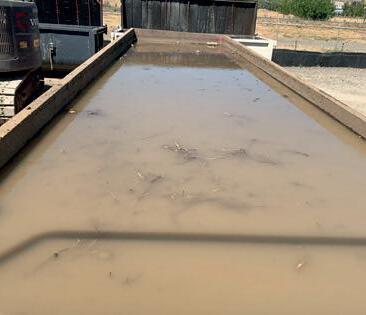

✓ LESS WASTE TO HANDLE
✓ LESS LABOR TIME

✓ 30% LESS DISPOSAL COSTS
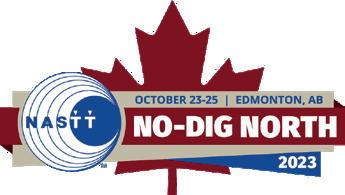

✓ 50% LOWER FREIGHT VOLUMES
✓ EASY APPLICATION

✓ INERT POLYMER

✓ ENERGY SAVINGS
✓ 100% BIODEGRADABLE
OCTOBER 23-25 Edmonton No-Dig North Trenchless Convention Booth 227 HDDUGS.COM Discover the latest in Trenchless Tech! 8 | NASTT-NW JOURNAL | Fall/Winter 2023 BACK TO CONTENTS
+ 916 250 7216 deanbudney @aprotekusa.com www.aprotekusa.com TURN YOUR LIQUIDS INTO SOLIDS USA, Inc. Head Office & logistics 1907 Colusa Way San Jose, CA 95130 - USA Turn your liquids into solids with APROMUD® Come and visit us at Booth #325 • HDD • TUNNELING • BORING • HYDRO EXCAVATION • MINING PROCESS • TANK CLEANING Liquid sludge Solid sludge Apply & mix of APROMUD®
2020/2021 CITY OF REGINA CIPP LINING CONTRACT
McCarthy Boulevard Trenchless Lining and Chamber Repair of Large Diameter Trunk Sewer Including Bypass
ABSTRACT
This article will focus on the following large diameter lining and bypass on McCarthy Blvd in Regina, Saskatchewan for the 2020/2021 CIPP
Sewer Rehabilitation Project:
CIPP Lining:
• 270 m of 1,500 mm pipe
• 338 m of 1350 mm pipe
• 8.7 m of 1200 mm pipe
• 96 m of 900 mm (siphon)
• 96 m of 525 mm (siphon)
Trenchless Chamber Repairs:
• Lined 7' x 8' chamber
• Lined 8'2" x 8' chamber
• Replaced 9' x 9' chamber
• Deteriorated beyond trenchless repair
Bypass Info:
• Peak Daily flow 1,000 L/s combined
• Three separate pump locations – (5)12" pumps, (4)8" pumps, (2)6" pumps
• Single 24" header over 1 km long with 2 km of pipe in total used.
• Main bypass pickup utilized a trench pit with stingers cored directly into a 1,350 mm pipe
The two converging sewer trunks convey roughly two thirds of the city’s wastewater. High concentrations of H2S have caused extreme deterioration to the pipes and structures in the area. One section of 1,500 mm pipe collapsed during the bidding process and had to be repaired conventionally. The road itself is an arterial road that provides access to several parks and walking paths in the area. Two lined siphons run under Wascana Creek, so bypass had to extend across the bridge. A City-planned bridge rehabilitation project ran simultaneously to the bypass and lining. Several subtrades were used throughout the project for both trenchless and conventional repairs. Ultimately project was completed ahead of schedule with limited social-economic impact to the neighbourhood.
INTRODUCTION
Regina, Saskatchewan is a city of roughly 250,000 people located in southern Saskatchewan. On March 11, 2020 the city of Regina tendered a CIPP lining contract to be completed over the 2020 and 2021 calendar years, the project included roughly 12 km of lining in sizes ranging from 200 mm in diameter up to 1,500 mm in diameter. The bid items included CIPP, bypass, trenchless manhole rehabilitation, traffic control, as well as all other incidentals required to complete the work. The focus of this paper will be on the segments highlighted in figure 1 on McCarthy Blvd.

The tender closed April 17, 2020 the city of Regina awarded Insituform Technologies the contract officially on May 15, 2020 as the successful bidder. The initial scope of work was bid along with United Rentals as the bypass subcontractor and included:
Cured in place pipe rehab on:
• GIS ID 7111 7.6 m of 1,200 mm pipe
• GIS ID 7110 223.0 m of 1,350 mm pipe
• GIS ID 7200 97.0 m of 1,500 mm pipe
Manhole Rehab on:
• Chamber GIS ID 1164
All traffic control and required bypass
During the tendering process, pipe ID 7200 (1,500 mm) just north of chamber 1164 suffered a catastrophic failure and the city decided to amend the contract to include the full length of ID 7200 from chamber 1164 to manhole 15450 as well as the completion date for these works to July 31 as they feared another potential collapse.
Unfortunately, also during the tendering phase, the COVID-19 pandemic became very serious, resulting in restrictions and shut downs throughout North America, causing delays in the tendering and award of the project.
Kevan Howard, P.Eng., Insituform Technologies, Calgary, Alberta and Brooks Harvey, United Rentals, Calgary Alberta
NASTT-NW.COM | 9 BACK TO CONTENTS
Minneapolis, Minnesota
PROJECT TIMELINE
April 17, 2020: Bid Close
May 15, 2020: Project Awarded
May 29, 2020: GIS ID 7614, syphon 6808 and syphon 6809 added to contract
July 3, 2020: Project completion pushed until mid-October 2020 –subsequently pushed until 2021 to coincide with a bridge rehab project on the other bridge deck over the Wascana creek

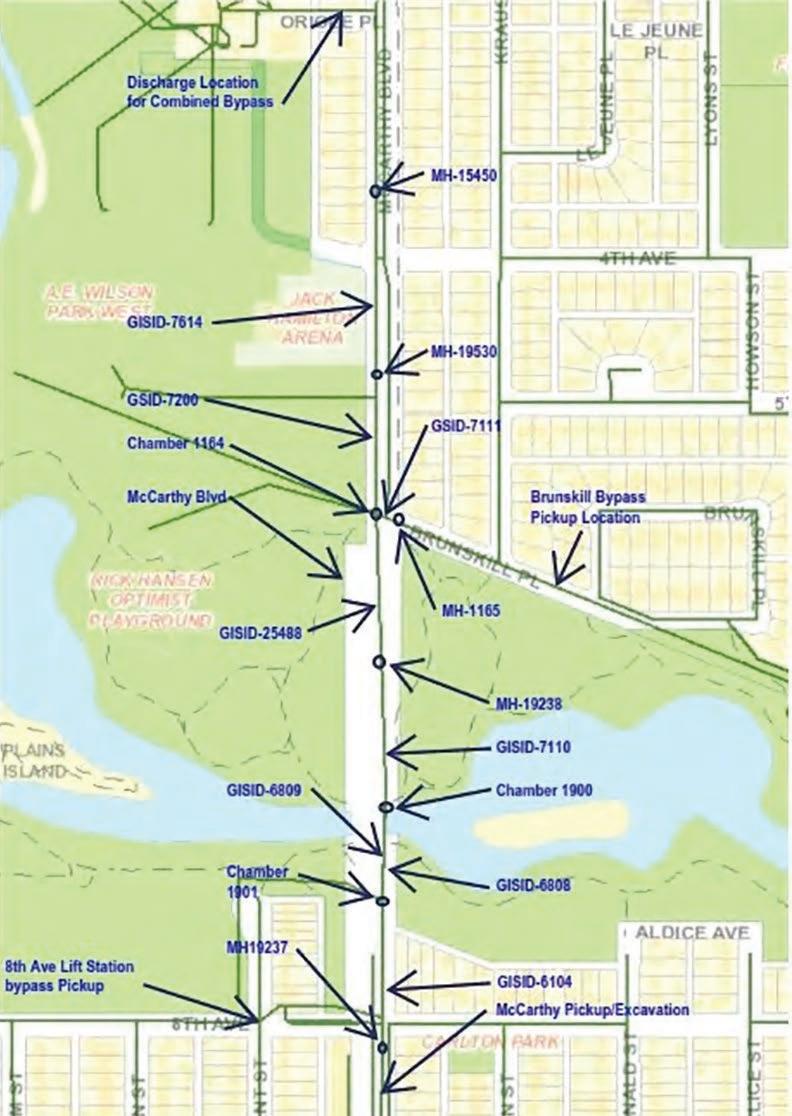
September 24, 2020: GIS ID 6104 added to the contract
March 31, 2021: MH Chambers GIS ID 1901 and 1900 added to the contract April 25, 2021: McCarthy Blvd closed and bypass mobilization/setup commenced May 12, 2021: CIPP Lining commences
May 26, 2021: CIPP Lining operations completed May 28, 2021: Manhole rehab lining commences June 15, 2021: Manhole rehab lining completed June 19, 2021: Bypass decommissioning commences
June 28, 2021: Bypass decommissioning completed, road is opened to traffic
Trenchless Designs
The CIPP designs followed ASTM standard F216 (CIPP) based on Table 1:
Flexural Modus of Elasticity (Short Term) (Felt Tubes)
Felt/Fiberglass, Fiberglass as recommended by the Manufacturer
Flexural Strength (Short Term) (Felt Tubes)
Felt/Fiberglass, Fiberglass as recommended by the Manufacturer ASTM D-790 3 MPa (4,500 psi) Contractor Value
Design Safety Factor 2.0 (1.5 for pipes 900 mm (36") or larger
Creep Retention Factor 50%
Ovality 3% or as measured by field inspection
Constrained Soil Modulus Per AASHTO LRFD Section 12 and AWWA Manual M45
Groundwater Depth 2 m (6.6 ft) below surface grade
Soil Depth (above the crown) As specified or indicated on the Plans
Live Load Highway, railroad or airport as applicable
Soil Load (assumed) 1,920 kg/cu. m (120 lb/cu. ft)
Minimum Service Life 50 years
Table 1: CIPP design criteria
Insituform utilized the following in the design calculations:
Liner: Insitutube Conventional and Reinforced liner
Resin: L721 (conventional liners), 102N (reinforced liner)
Manufacturer: AOC Resins
Conventional Liners
Flexural Modulus: 2,758 MPa
Long Term Modulus Reduction: 53%
Flexural Strength: 31 MPa
Iplus Reinforced Liner
Flexural Modulus: 5,252 MPa
Long Term Modulus Reduction: 25%
Flexural Strength: 31 MPa
The wet-out facility utilized for these liners is located in Indianapolis Indiana, due to depth of the pipe, size and shipping weight restrictions a fiber reinforced Iplus liner was required to line GIS ID 7614 (1,500 mm X 170 m long X 7.3 m deep).
The design of the two siphons running under Wascanna Creek were based on actual water elevations provided by the City of Regina as well as record drawings showing the depth of the pipe under the creek. Since it was not possible to verify the exact depth, an additional 4 m of groundwater elevation was added to ensure the liner would not fail under extreme conditions.
McCarthy Boulevard Trenchless Lining and Chamber Repair of Large Diameter Trunk Sewer Including Bypass
Figure 1: Project key map
Test Method Cured Composite Per ASTM F1216 Cured Composite Per Design
Property
ASTM D-790 1724
Contractor
MPa (250,000 psi)
Value
10 | NASTT-NW JOURNAL | Fall/Winter 2023 BACK TO CONTENTS
The designed liner thicknesses are outlined in Table 2:
After awarding the contract, the city decided to include two additional manhole chambers to line (GIS ID 1900 and 1901) as the bypass would be in place and any work on them after would be extremely costly. Empipe solutions was engaged as the manhole rehabilitation subcontractor for this section of the work. Empipe utilized Spray wall Structural Polyurethane as their rehabilitation product and the designs were based off a flat wall application design methodology and prepared by AECOM.
Only the two additional manhole chambers were rehabbed during the project due to issues discovered after the bypass was setup and the original manhole chamber (GIS ID 1164) could be thoroughly inspected. The resulting spray liner thickness is outlined in Table 3 (valid for both GIS ID 1900 and 1901):
limited access to the pipe, a pit was dug around it where we then cored into the top of it to set the suction directly into the pipe. Between two and three pumps were needed to achieve 100% redundancy, depending on the inflow. We plumed five pumps together and rotated the usage throughout. This gave us the ability to reduce wear on each individual pump as well as ongoing maintenance during each pump’s turn to rest.
Bypass Designs
The city needed approximately 1,000L/s or 15,850 USGPM PDF (Peak Daily Flow) to keep the area free and clear for the lining process. Working with the City of Regina, we developed a number of revisions in order to minimize the socioeconomic impact on the surrounding area. Our internal engineering team who designed and stamped the plans had to take into account the needs of the City as well as design a system that would be capable of the above flows in a safe and efficient manner. The main header pipe (24" HDPE) ran over 1km (3,600') across a bridge and eventually through a park to the pumping station where it was then pumped to the treatment plant outside the city. In order to keep access to the park open we provided a wheelchair safe ramp, a walking ramp and a bike safe ramp in three different locations.
The design had to take into account 3 separate pumping locations in order to bypass the lining areas in Figure 1.
1. The Primary or McCarthy Suction Pit (PDF @ 672 L/s), Table 4
a. The primary consisted of (5) 12" diesel pumps utilizing 18" HDPE suction stingers and pumping through 12" HDPE into a 24" HDPE header pipe. Due to the high flow rate and
Table 4: Primary system curve
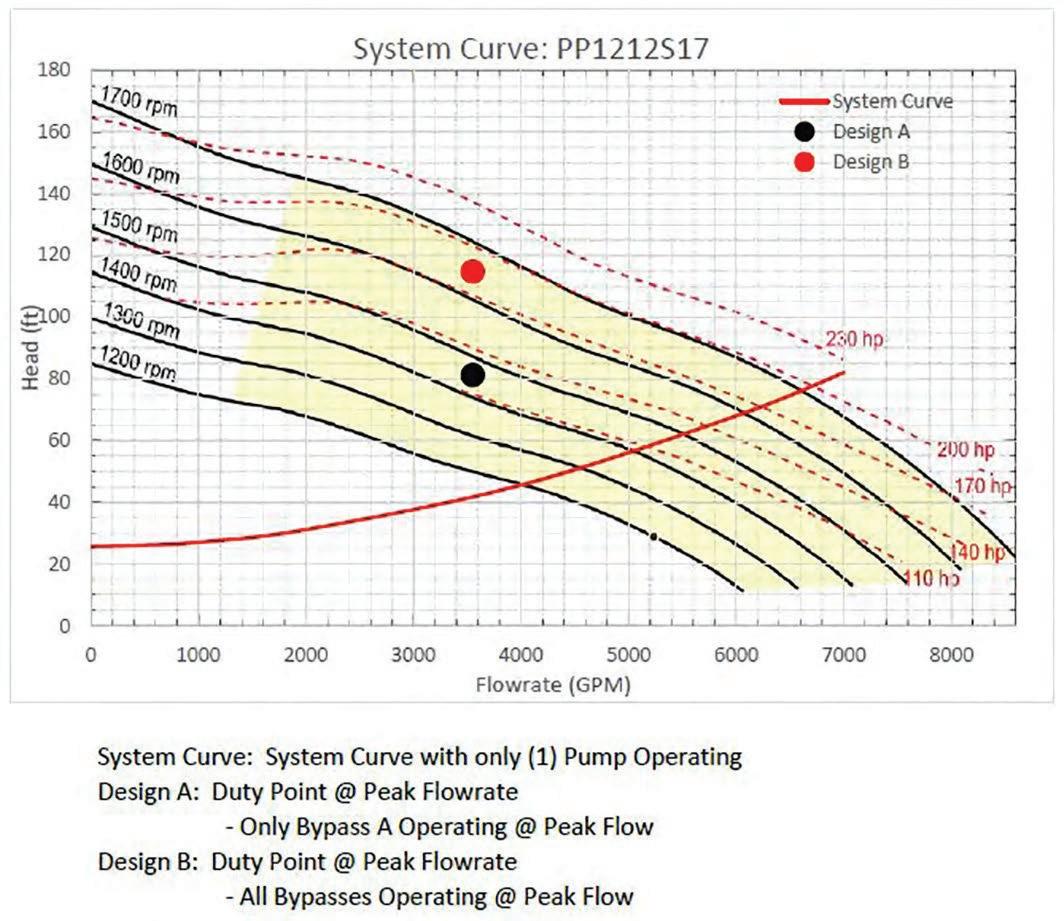
2. The Secondary or Brunskill Bypass (PDF @ 320 L/s), Table 5
a. This pumping setup had (4) 8" diesel pumps pulling from an existing MH. The crown of the MH was removed and built up above ground with additional barrels to give us the full 42" of space to insert the suction stingers. 12" HDPE stingers were utilized at the suction end flowing into dual 12" HDPE lines which eventually tied into the 24" header pipe. This setup was designed with 100% redundancy for the PDF.
3. The Tertiary or Kent Bypass (PDF @ 50 L/s), Table 6
a. This setup consisted of (2) 6" diesel pumps to bypass the existing lift station, which would have pumped fluid into the primary vault to be lined. We had to come up with a solution to bypass this lift station and tie it into the 24"
Section Shape Type Dimension 1 Dimension 2 Depth (m) Required Liner Thickness (mm) Upper Barrel Round 701 0.0-0.61 6.0 Chamber Roof Rectangular 1829 1829 0.61 23.5 Lower Chamber Wall Rectangular 2317 2317 0.61-4.27 64.0
Table 3: Manhole chamber thickness
Client ID U/S MH D/S MH Install Type Pipe Material U/S MH Depth (m) D/S MH Depth (m) Installed Diam. (mm) Installed Length (m) Liner Thickness (mm) Notes: 7111 1165 1164 AISC RCP 3.5 3.7 1,200 8.70 19.5 7110 1900 19238 AISC RCP 3.6 4.2 1,350 125.00 22.5 25488 19238 1164 AISC RCP 4.2 4.7 1,350 98.00 24.0 7200 1164 19530 AISC RCP 4.7 6.0 1,500 104.00 31.5 7614 19530 15450 AISC RCP 6.0 7.3 1,500 170.00 25.5 Iplus Reinforced Liner 6809 1901 1900 Water RCP 4.6 3.8 525 96.00 13.5 Siphon - water install 6808 1901 1900 Water RCP 4.6 3.8 900 96.0 19.5 Siphon - water install 6104 19237 1901 AISC RCP 3.5 4.6 1,350 115.0 24.0
Table 2: CIPP liner design thickness
NASTT-NW.COM | 11 BACK TO CONTENTS
header pipe. Flow rates would suggest we use 4" diesels, but we decided on 6" diesels so we could hit a higher PSI and overcome the flows in the 24" header pipe. The fluid also ran through a steel platted road ramp to keep bridge access open on the west side for external contractors to work on a bridge rehab project. This system was designed with 100% redundancy for PDF.
setup. During operation of the bypass, two additional vaults were added by the City to be lined adding approximately two weeks to the pumping duration. With these extras we were still able to meet their timelines and be offsite without extended disturbance to the neighboring communities.
Implementation
On April 25, 2021 the City of Regina placed the traffic control on McCarty Blvd and closed the road from Dewdney Avenue to Oriole Place. United Rentals began mobilizing in equipment that same day. On April 26, 2021 Cary’s Trenching began the excavation on the main bypass pit on McCarthy just south of 8th Avenue
The three combined bypasses ran for a total of 42 days, 24 hours per day. We had four-man teams operating the system, with one pump technician at each pump location as well as a rover checking the line. Our four-man crews worked around the clock to maintain the integrity of the bypass system through variable weather. Our onsite team provided daily reports which included a number of hourly checks to be performed on each pumping
The bypass setup continued from April 26, 2021 to May 9, 2021 at which point the United Rentals crew was able to load and pressure test the line.



During the pressure test, the cleaning subcontractor Uni-Jet Industrial Pipe Ltd. began to clean and CCTV the pipes. It was discovered that even with the bypass operational, water was backflowing into the system due to a very small grade on the existing pipes. Uni-Jet’s crews focused on the two siphons as soon as they were accessible and under bypass since those were the first two pipes to be lined, and can take a significant amount of time to clean if a lot of debris is present. Utilizing their siphon cleaning

McCarthy Boulevard Trenchless Lining and Chamber Repair of Large Diameter Trunk Sewer Including Bypass
Table 5: Brunskill bypass
Table 6: The Tertiary bypass
Figure 2: Bypass installation at main bypass pit
Figure 3: Bypass suction cored into pipe at main bypass pit
BACK TO CONTENTS 12 | NASTT-NW JOURNAL | Fall/Winter 2023
trailer which is able to flush and vac the line simultaneously, they were able to clean the line quickly and efficiently, they then proceeded to work on the other segments as the lining crew started their work.
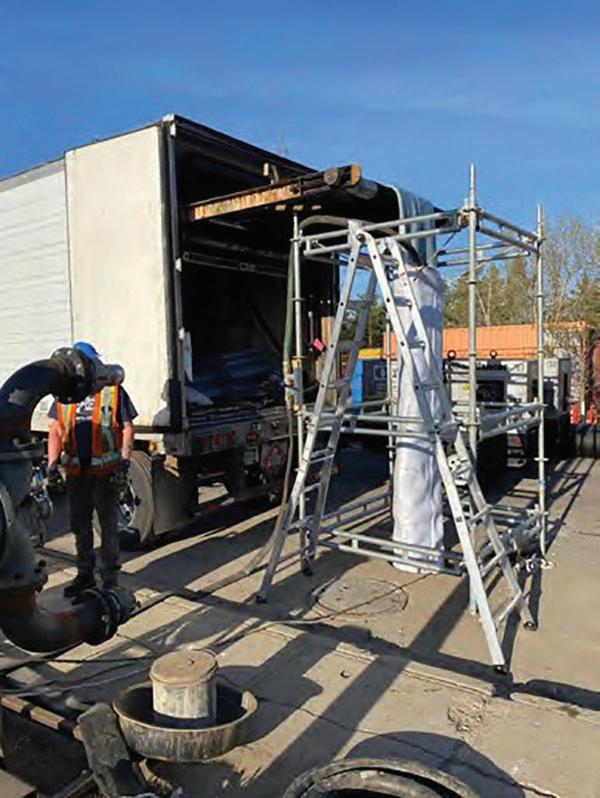
Due to a late spring, several US states on the route from Indianapolis to Regina had extended their spring overweight frost bans, as a result the original lining schedule had to be amended to allow the smaller, lighter liners to be installed first. On May 12, the first wet-out liner arrived from Indianapolis for GIS ID 6809 and the CIPP lining operations commenced. GIS ID 6809 is a siphon and had to be installed with water inversion as oppose to air inversion/ steam cure as is typically used by the crews in Western Canada.
liner in GIS ID 6104 was installed on May 25, without incident.
Uni-Jet Industrial Pipe Services performed the post lining CCTV inspections after the final liner was installed, and the Empipe Solutions manhole rehabilitation crew arrived to begin work on the three chambers. The intention was to complete GIS ID 1164 first, followed by GIS ID 1901 and 1900. Unfortunately, when the Empipe crew inspected and began the prep work on the chamber GIS ID 1164 they discovered that the chamber was in a state beyond the capabilities of a trenchless repair and was at a significant risk of collapse. An abandoned pipe tying into the chamber to the west had collapsed creating a large void under the road that was not repairable without an excavation. The city of Regina had performed a CCTV inspection on the chamber prior to contract being released, but the excessive flows in the chamber made a proper visual inspection virtually impossible.
The City of Regina decided that the best option was to have the chamber replaced with a preferred underground contractor. This scope of work was taken on by the city directly in order to expedite the process and have a chamber manufactured that would suit their needs immediately. While chamber GIS ID 1164 was being replaced, the Empipe crew started work on the rehabilitation of GID ID 1901 and 1900. Uni-Jet Industrial Pipe Services assisted in completely dewatering the chambers and prep work began.
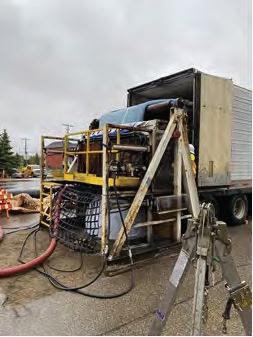
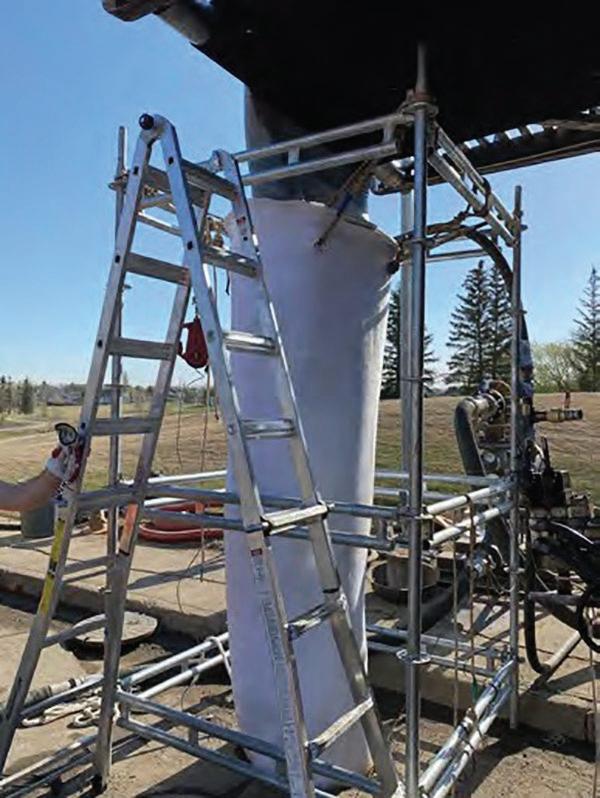
Both chambers were completed by June 15, 2021 and Uni-Jet Industrial Pipe Services was able to perform a 3D panoramic inspection video of the rehabbed chambers. On June 19, 2021 the chamber replacement was completed.
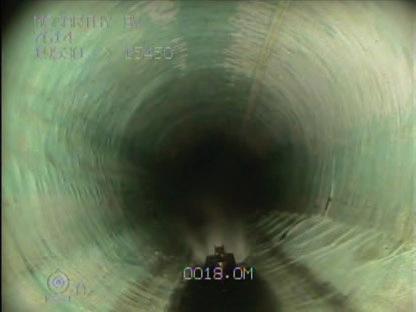
Both liners were installed without incident, the lining crew then installed 7111, 25488, 7110 using air inversion/steam cure. The liner for GIS ID 7614 was installed on May 21 using a 70-ton crane, due to its size and weight we were unable to ship it from the wet out in Indianapolis to Regina in a refrigeration truck with a conveyor trailer, as a result a crane was employed to load the liner into the dual gland inversion machine to facilitate the lining.
On May 23 overnight, after the liner for GIS ID 7200 was installed, a large storm hit the region, causing the flow levels to increase considerably. The bypass setup on Brunskill had to be temporarily shut down and the plugs removed to allow the flow to be conveyed through the pipes rather than through the bypass. Fortunately, the lining on GIS ID 7200 was completed in time to prevent any significant damage to the considerable amount of houses/businesses tied in upstream of the bypass. The bypass setup on McCarthy was able to keep up throughout the storm and did not need to be shut down. All the pipes downstream of the Brunskill setup were already lined so this did not have a significant effect on the schedule due to having to re-clean the lines. The last
Following the completion of the trenchless and conventional dig repairs, the bypass was decommissioned and the tear down of the pipe and de mobilization began. During the bypass pumping it was discovered that a section of pipe had cracked down to the spring line in the bypass trench, Cary’s Trenching was able to get a stainless-steel cap manufactured to seal the hole, using a 1350 PVC pipe cut into bands, they were able to seal the remaining stinger holes and cap the top of the pipe 300 mm of concrete to ensure a proper seal. The excavation was backfilled and asphalted as the bypass pipes and gear was removed.
Socio-Economic Impact
Due to the proximity of the several neighbourhoods, parks and recreational facilities to the project locations, maintaining safe access to these facilities was a top priority to the City of Regina. The road is also a major access point for many residents on the west side of the city. Because of these various issues, the City was very eager to have the project completed in a very tight timeline. The work was completed on the northbound lanes of the bridge over the Wascanna creek while bridge rehabilitation was being completed on the southbound lanes. These two projects were done concurrently to limit the impact to traffic and access as much as possible, while still completing the required work. The project team had to take this into account while developing the schedule as well as the methods for doing the work. Prior to commencement of the bypass a detailed schedule was provided to the city indicating the start and completion dates for all the various construction items, and large penalties were in place if these dates were exceeded. It was critical that access to the Rick Hansen Optimist Park and the A E Wilson Park Arena and Tennis Club was maintained. As such, several additional measures were taken to ensure access for everyone. A large pedestrian bridge was constructed over the bypass hose to
Figure 4: Liner 6809 install
Figure 5: Liner 6808 install
Figure 6: Liner 6104 –typical air inversion install
Figure 7: Post lining video of 7614
BACK TO CONTENTS NASTT-NW.COM | 13
allow people with limited mobility to access the pathways and the playground located in the park.
Project Successes
The project was completed on time and on budget, there were very few complaints from the local residents despite the large footprint of the work zone. We were successfully able to complete the project while maintaining access for all citizens to the local parks and recreational facilities. The project overall shows how conventional dig repairs can be combined with modern trenchless technology, while incorporating a very major bypass setup to provide a long-
term rehabilitation. It also demonstrates how (with proper planning a major construction project despite a large footprint and several active construction zones within that footprint) access can be maintained, and the impact on residents can be minimized.
Conclusions
Considering the challenges and tight timelines of the project, it went very well overall. The project timelines were achieved, no safety incidents occurred and the City of Regina received infrastructure renewals that will operate safely for a minimum of 50 years. It is

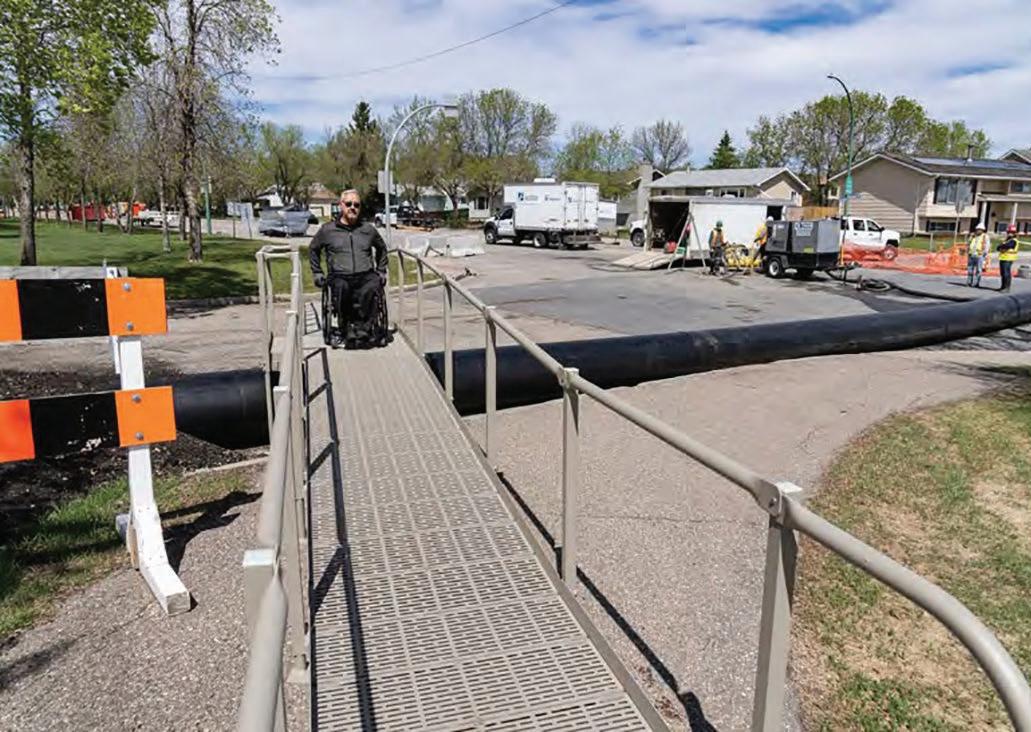
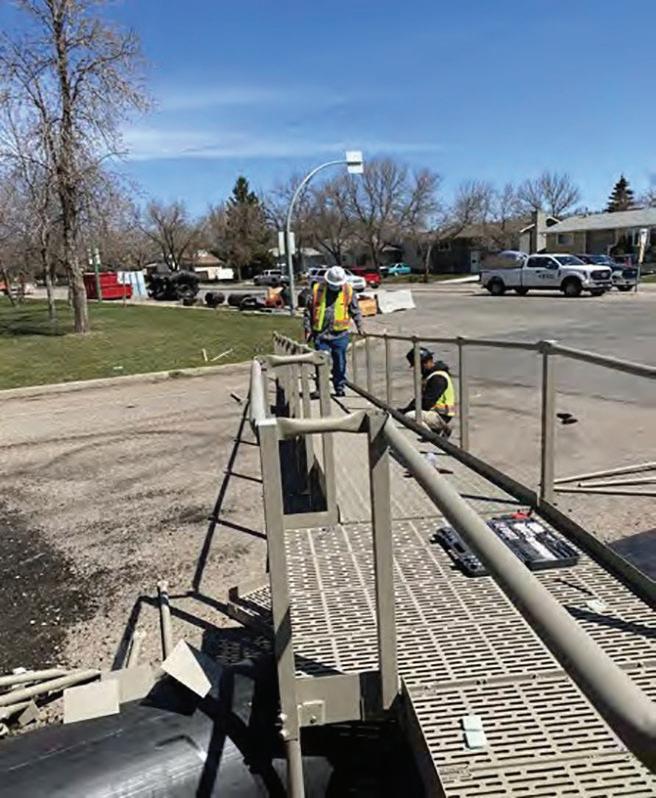
McCarthy Boulevard Trenchless Lining and Chamber Repair of Large Diameter Trunk Sewer Including Bypass
Figure 8: Wheelchair access ramp during construction
14 | NASTT-NW JOURNAL | Fall/Winter 2023 BACK TO CONTENTS
Figure 8: Wheelchair access ramp during construction
a prime example of a multi-faceted approach utilizing modern rehabilitation techniques as well as traditional underground repairs in order to quickly, and safely achieve the goal of providing service to the residents and taxpayers of the City of Regina for years to come.
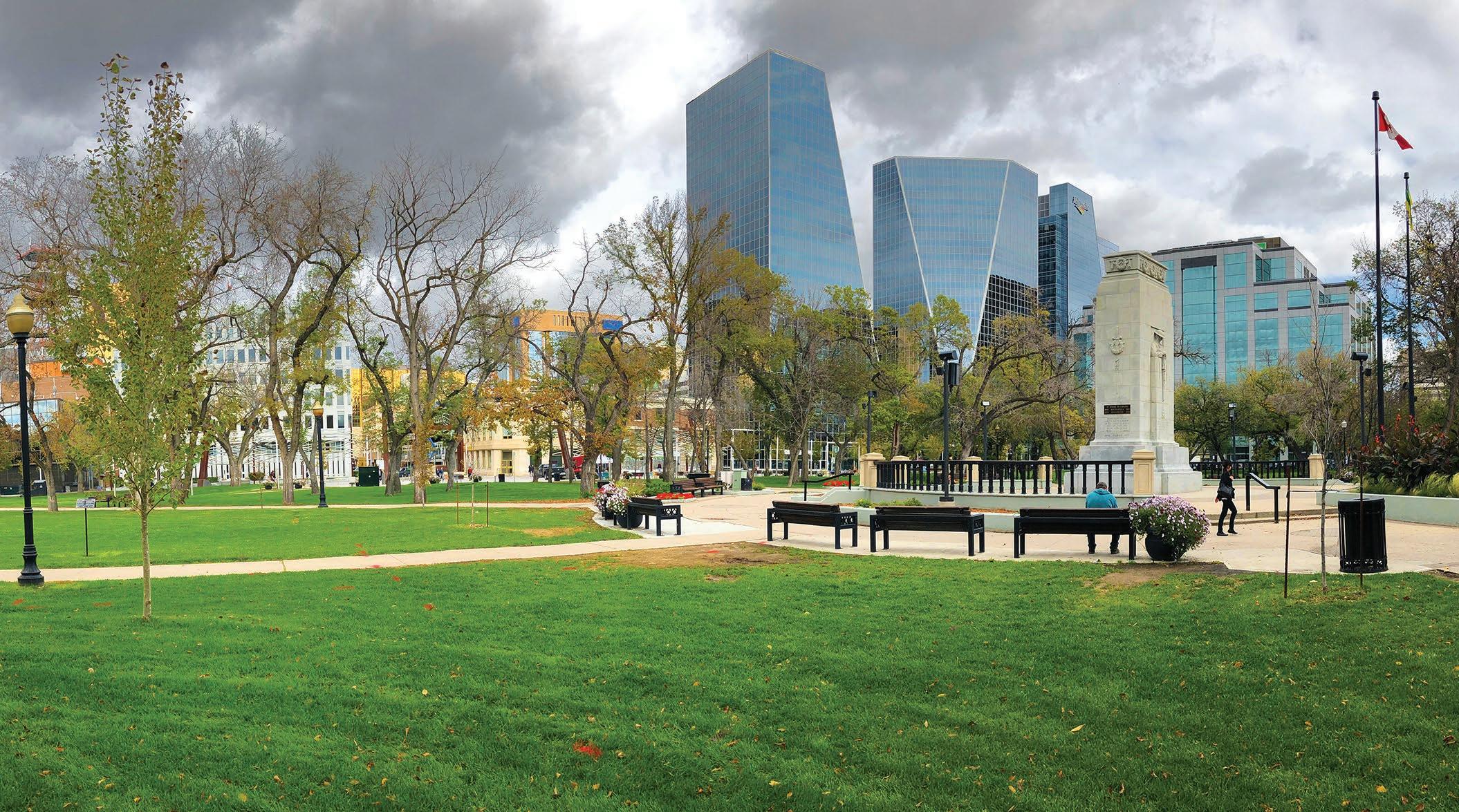
Acknowledgments
The project team involved in the planning and implementation of this project was diverse, spanning across Canada and the United States, we’d like to acknowledge the hard work of everyone involved: City of Regina: Allison Han, Doug Booth, Maggie Su, as well as the city underground crew that installed the required CIPP installation manholes
Insituform Technologies: Andrew Foster, Derek Riches, Travis Bakke, Brendan Larsen, Eugene Zaltsman, Lisa Babich, Jason Berry as well as the hard-working install crew
Cary’s Trenching: Trevor Cary, Marny Duncan-Cary as well as their onsite underground crew
Empipe Solutions: Stephen Mercer, Angela Mercer, Jason Davidson, and their spray lining crew
Uni-Jet Industrial Pipe Services: Ryan Slagerman, Chris Hunter, Bob Boddy and the rest of the onsite cleaning crew
United Rentals Fluid Solutions: Patrick O’Connell, Keife Skorlatowski, Scott Wanner, Jason Shihinski and his installation and monitoring crews.
References
NASSCO (National Association of Sewer Service Companies), 2010. Pipeline Assessment and Certification Program.
NASSCO ITCP (National Association of Sewer Service Companies), 2013. Inspector Training Certification Program
ASTM F-1216 (2009), Standard Practice for Rehabilitation of Existing Pipelines and Conduits by the Inversion and curing of a Resin-Impregnated Tube.
ASTM D-638 (2014), Standard Test Methods for Tensile Properties of Plastics.
ASTM D-790 (2010), Test Methods for Flexural Properties of Un-Reinforced and Reinforced Plastics and Electrical Insulating Materials.
ASTM D-5813 (2012), Cured-in-Place Pipe Thermosetting Resin Sewer Pipe.
ASTM F3190-21, Standard Practice for Heat Fusion Equipment (HFE) Operator Qualification on Polyethylene (PE) and Polyamide (PA) Pipe and Fittings
ASTM F2620-20, Standard Practice for Heat Fusion Joining of Polyethylene Pipe and Fittings
ASTM F3124 - 15e1, Standard Practice for Data Recording the Procedure used to Produce Heat Butt Fusion Joints in Plastic Piping Systems or Fittings
Copyright 2023 by the North American Society for Trenchless Technology. Original paper distributed at the NASTT 2022 No-Dig Show. All rights reserved. www.nastt.org
NASTT-NW.COM | 15 BACK TO CONTENTS
See You Next Year in PROVIDENCE




SCAN THE QR CODE TO VIEW A VIDEO AND LEARN MORE ABOUT PROVIDENCE!


2024
Geomatics, Integrated Sensors and 3D Imaging
Michael
Introduction
Historically, surveying in underground pipes has been the exclusive domain of camera technology. Over time, underground pipes can corrode, degrade, or suffer from structural issues. Integrated sensor inspections can help assess the condition of pipes and determine whether repairs or replacements are needed to maintain their integrity. Also, we have found that historical ‘as-built’ drawings showing pipe sizes and other information may not be accurate. With such aging infrastructure, Municipalities and Cities are looking for a much more detailed understanding of their existing infrastructure.
The costs for inserting a work platform, for a video only inspection, are already accounted for; the additional sensors are a small incremental expense and provide substantial benefits. Our sensor suite enables the creation of accurate 3D-models of the sewer lines. These models serve as valuable references for maintenance, emergencies and future expansion. Excavations and construction projects can also potentially damage underground pipes if their locations aren’t accurately known. Pipe Meander Mapping can help update utility maps and prevent accidental damage.
Client need for high accuracy 3D imaging has driven sensor technology in the direction of sensor integration using closed circuit TV (CCTV), Laser, Sonar, GPS, gas, and temperature sensing and based on a range of differing platform types (Tractor, Float, Remotely Operated Vehicle (ROV), etc.). We refer to this as Integrated Sensor Surveys otherwise known as MSI. Our proprietary inspection systems operate without the need to bypass or de-water thus enabling the acquisition of extremely accurate data and comprehensive assessments of trunk sewers during operation.
Overall, Integrated Sensor Surveys of underground pipes is a proactive approach that helps ensure the safety of communities, protect the environment, and maintain the functionality of critical infrastructure.
A fully integrated and detailed picture of the pipe depends on a sophisticated processing software package. Electronic time delays through the system, both fixed and variable, must be carefully determined, and errors must be either eliminated or calibrated and corrected in software. All inputs related to attitude and location must be corrected and appropriately interpolated. It is important to design the system such that any correctors are small so that errors in the correctors do not have a substantial impact on overall system performance. Technology now supports the collection of video & XYZ Point Cloud data above and below water using high resolution digital video cameras, lasers (time of flight) and digital profiling sonars. A wide range of pipes can be surveyed 6"/150 mm to 21'/6.5 m using a variety of platforms including tractors, ROV and skid mounted or pontoon floats. In large diameter sewers, lighting is key to achieving high resolution images, high quality frame grabs with a capability extending out to long ranges (up to 6,000 ft). Sonar allows sediment buildup to be identified and quantified along with the distance from the closest Man Hole (MH). When integrated with other sensors it can provide measurement capabilities for pipe diameter; pipe shapes pipe subsidence and the identification of air pockets in siphons.
Platforms include:
• Tractor- and float-based work platforms for pipes, outfalls, which are capable of ranges (in pipe) to 6,000'.
• Manhole inspection/survey platform using CCTV and laser sensors for Level 2 (measurements) reporting.
• Pipe ROVs
• Custom/innovative robotic systems and software for specific survey challenges.
For pipe surveys from small 6" (150 mm), to large diameter tunnels there is a range of sensor technologies:-
• High resolution 1080p video, see small details clearly
• Time of Flight 3D laser, (LiDAR) accuracy to 10 mm (3/8") with a dense point-cloud.
• Profiling sonar with a range accuracy of .5% of range.
• Temperature and Gas (H2S) sensors.
• RTK GPS 2 cm elevation accuracy, calculate gradients between MHs
• GIS ready data, install ready.
AquaCoustic has developed tools for the generation of reports from the raw sensor data, that enables point cloud matching/integration of the various sensor data streams. This combines the laser and sonar data to produce an (X,Y,Z) point-cloud. We then generate a report that allows the client to easily assimilate the information, to make meaningful decisions and of course all the supporting digital data is supplied.

Typical Uses of the Data
Integrated laser/sonar data for pipe deformation/ovality deviation from the ‘as-builts.’
• Pipe Meander Mapping to 10 cm to 30 cm accuracy for mapping old infrastructure including elevation measurements.
• Use of integrated sensors to indicate pipe storage capacity (i.e., how long can water be held back in the event of needed repairs).
ADVERTORIAL
Blackshaw, AquaCoustic Remote Technologies Inc., Vancouver, British Columbia, Canada (www.aquacoustic.com)
NASTT-NW.COM | 17 BACK TO CONTENTS
• Use of integrated sensors in establishing any water flow restrictions based on measuring pipe cross sectional restrictions.
• Pipe inside dimensions to within 10 mm. Important for the actual pipe volume and pipe hydraulics.

• Pipe lining volumes and shape.
AquaCoustic Remote Technologies Inc. specializes in inspection of structures and assets such as trunk sewers, mine sites, hydro dams, reservoirs, ports, river crossings and bridge abutments using a wide range of sensor technologies to collect highly accurate data that is used by civil engineers to prioritize remedial work for fixed assets. We are both NASSCO PACP & MACP certified.
Our clients include civil engineering firms and municipalities, mining firms and infrastructure asset owners throughout North America and the world.
The following figures show some specific, real-life examples of underground pipe imaging surveys. A specific and unique feature of our CCTV is the very high clarity of the images along with high intensity lighting.

The benefits of Time of Flight Laser, (LiDAR). This image shows CAD-ready, laser point cloud data of a MH on the side of a storm drain.
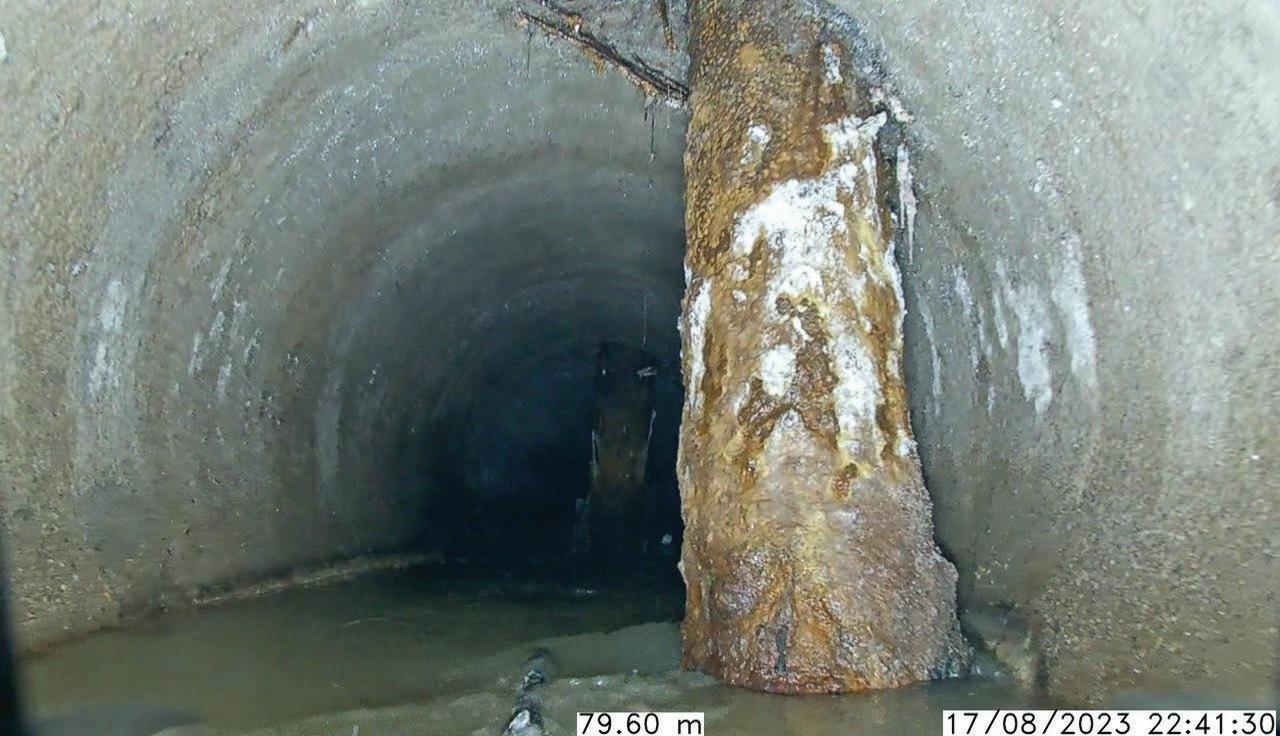 This image shows a pile driven through a Reinforced Concrete Pipe. It shows the perils of not knowing where the underground pipes are. A Pipe Meander Survey may have helped.
This image shows a pile driven through a Reinforced Concrete Pipe. It shows the perils of not knowing where the underground pipes are. A Pipe Meander Survey may have helped.
ADVERTORIAL 18 | NASTT-NW JOURNAL | Fall/Winter 2023 BACK TO CONTENTS
Image shows combined CCTV, LiDAR, and sonar data. All data is tied to the payout. This image shows a large tap in the side of the pipe
CONTRIBUTIONS
Our new and proven integrated sensor technologies have now demonstrated a number of significant contributions to the geomatics field, namely:
• Proven processing enabling the integration of the more accurate laser
data with more coarse sonar for accurate pipe information along the platform track within the pipe.
• New information on pipelining condition using laser and sonar thus enabling accurate internal measurements, information on sediment in the pipe as well as joint strain and undulations in the pipe thus saving a Client significant expense.


• Laser sensors now allow accurate measurements of and within the pipe, including clear erosion and encrustation on pipe walls.
FileName:22-1649_CA_Ad_Resize_NorthWest_Trenchless_Journal_UTT_CA-EN Job#: 22-1649
• New capabilities to determine accurate pipe position and possible meandering from aging pipe infrastructure, where both distance and elevation are provided.
Proven Technology for Underground Construction
Our commitment is the detail that makes the difference.
Reliable technology and expertise for underground construction

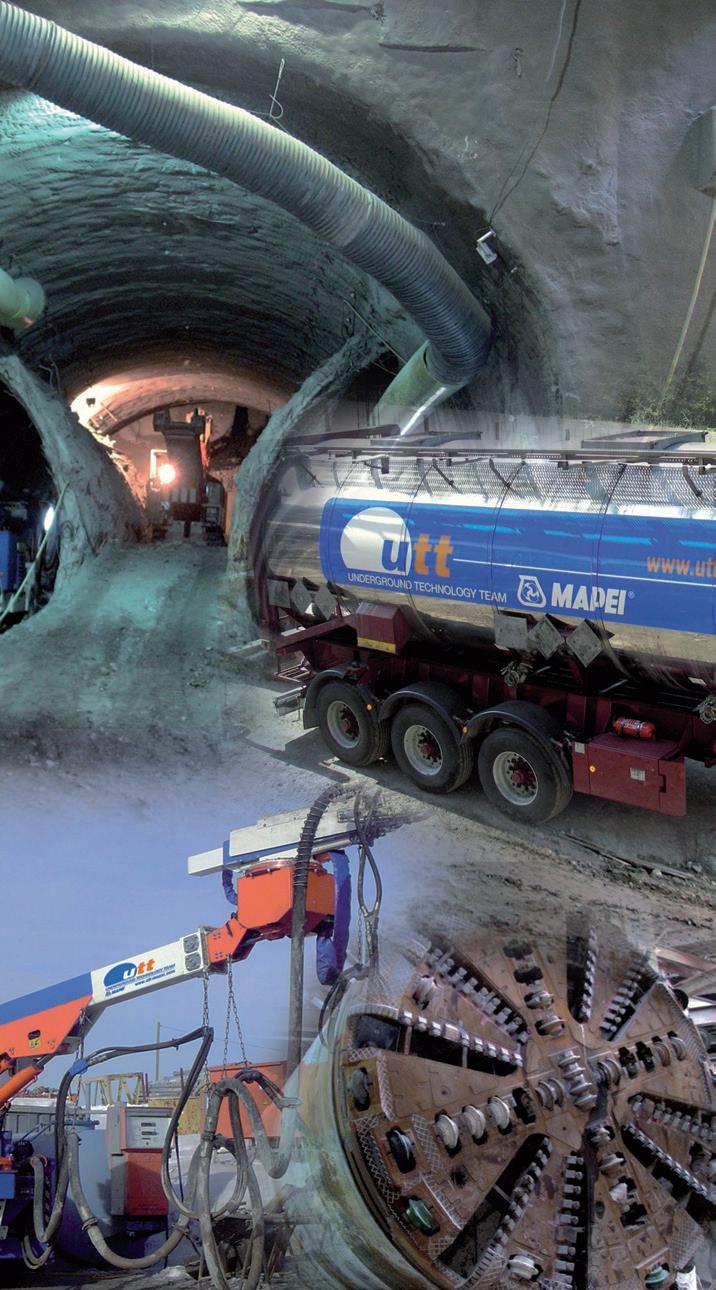
• Alkali-free set accelerators and admixtures for shotcrete
• Products for mechanized tunneling
• Products for grouting and consolidation
• Products for the repair, protection and coating of concrete

• Products for waterproofing
Discover the world of MAPEI: Underground Technology Team utt.mapei.com hq.utt@utt.mapei.com
1-800-426-2734 (1-800-42-MAPEI)
Merged report of the CCTV, laser, and sonar survey showing a graphed deviation from the pipe as-built; sonar and laser crosssection and frame grabs along the pipe.
A summary report showing pipe conditions, coded to PACP standards.
NOTE: COLORS VIEWED ON-SCREEN ARE INTENDED FOR VISUAL REFERENCE ONLY AND MAY NOT MATCH THE FINAL PRINTED PRODUCT. 1144 E. Newport Center Dr. Deerfield Beach, FL 33442
Artist: Simon Tremblay Email: stremblay@mapei.com Date: April 4, 2022 3:08 PM Page Size: 4,625" x 7" Number of Pages: 1 Bleed: No Amount: Colors: CMYK Process INFO SPECS 22-1649_CA_Ad_Resize_NorthWest_Trenchless_Journal_UTT_CA-EN.indd 1 2022-04-06 14:10:44 NASTT-NW.COM | 19 BACK TO CONTENTS


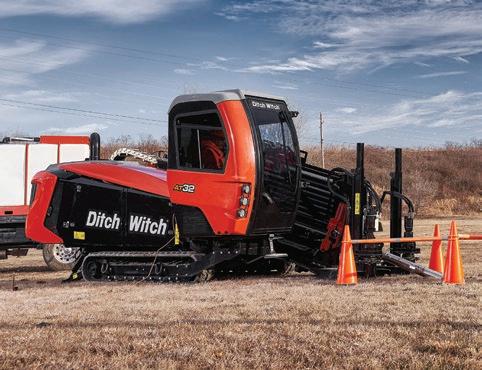



INTERACTIVE EDITION VISIT US ONLINE. HTTPS://NASTT.ORG/RESOURCES/REGIONAL-CHAPTER-MAGAZINES TRENCHLESS JOURNAL AVAILABLE ONLINE A USER-FRIENDLY, INTERACTIVE FORMAT THAT INCLUDES: 1. Active hyper-links to all websites and emails contained in the publication 2. Active links to the specific stories from the front cover and contents page 3. Active links to advertiser websites from their ads brandt.ca 1-888-227-2638 FULL-SIZE POWER WITHOUT THE FULL-SIZE FOOTPRINT NEEDFAST,FLEXIBLEFINANCING?WE DELIVER. CallTOLLFREE:1-855-711-4545orvisitbrandtfinance.com UnparalleledPower Withits155hpCumminsB4.5StageV dieselengine,32,000lbsofthrust/pullback and4,200ft-lbsofrotationaltorque,even solidrockdoesn’tstandachance. SuperiorProductivity TheAT32featuresincreaseddrillpipe capacity,nowallowing450ft.ofall-terrain pipeor600ft.ofdirtpipewithareversible pipeboxon-board,increasingproductivity. UnrivaledSupport Bestofall,thesemachinesarebackedby Brandt;thebesttrained,mostcommitted, 24/7/365after-salessupportinthebusiness with56fullservicelocationsnationwide. Burstingattheseamswithpower,theDitchWitchAT32isthenextgenerationofall-terrain drilling,packingperformanceandstrengthintoasleekpackage. 2023 | NORTHWEST THE OFFICIAL PUBLICATION OF THE NORTHWEST CHAPTER OF THE NORTH AMERICAN SOCIETY FOR TRENCHLESS TECHNOLOGY CITY OF REGINA CIPP LINING CONTRACT GEOMATICS, INTEGRATED SENSORS AND 3D IMAGING FALL/WINTER Return Undeliverable Canadian Items to: 2020 Portage Ave, Winnipeg, MB R3J 0K4 PM #40065075 COMING TOGETHER TO TRAIN AND DEVELOP THE FUTURE WORKFORCE FREE to print advertisers With print and electronic communication operating hand-in-hand, you can take advantage of the fact that Trenchless Journal is available online in a highly interactive format. THE OFFICIAL PUBLICATION OF THE NORTHWEST CHAPTER OF THE NORTH AMERICAN SOCIETY FOR TRENCHLESS TECHNOLOGY 20 | NASTT-NW JOURNAL | Fall/Winter 2023 BACK TO CONTENTS
Shaping Our Shared Future
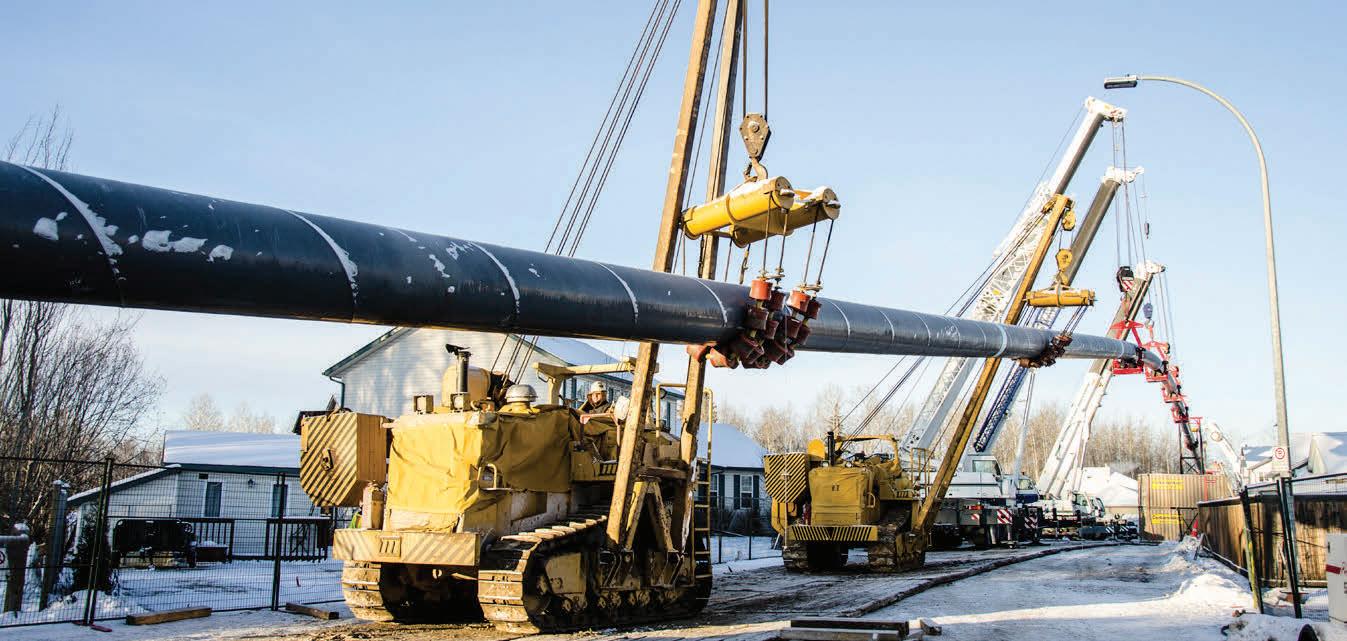
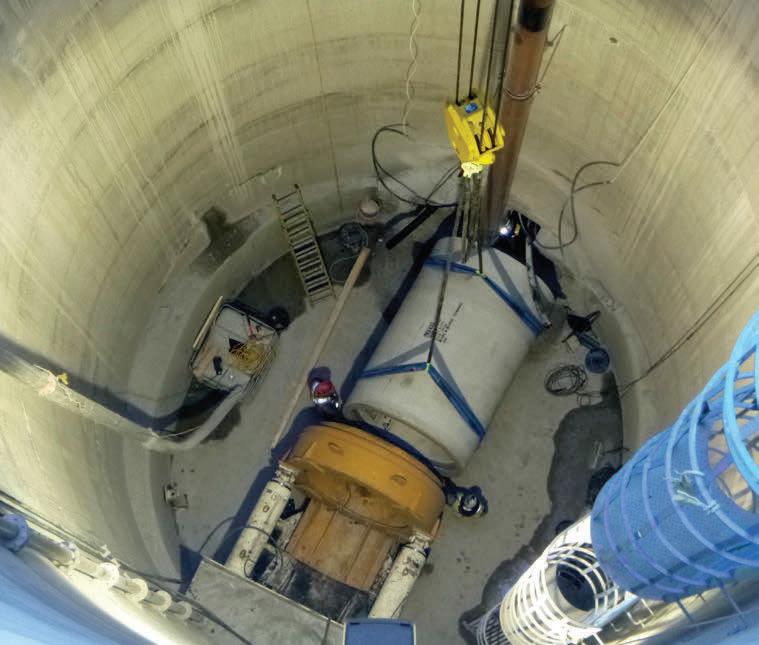

paper or other content and photos
an upcoming issue of this Northwest Chapter magazine,
Bontus
gbontus@aegion.com
Sharma
rsharma@cityofselkirk.com
Editorial submissions for the Northwest Trenchless Journal are welcome and due for our next publication by Friday, April 12, 2024. NASTT-NW.COM | 21 BACK TO CONTENTS www.ae.ca Associated Engineering specializes in trenchless design and construction. We provide communities with sustainable and resilient solutions. Our expertise includes horizontal directional drilling, micro-tunnelling, slip-lining, direct pipe, cased crossings, and pipe rehabilitation technologies. For information, contact Jason Lueke, National Discipline Leader, Trenchless, at luekej@ae.ca.
Call for Submissions If you would like to submit your project
for
please contact George
(
) or Raven
(
).
Minneapolis, Minnesota
COMING TOGETHER TO TRAIN AND DEVELOP THE FUTURE WORKFORCE
ABSTRACT
The underground construction industry is facing a workforce shortage at a time when there is rapidly growing demand for work. This situation is complicating the jobs of construction professionals as they work to meet customer needs and increase productivity. As the workforce shortage continues, two solutions are rising to the top – advancements in horizontal directional drill (HDD) technology that help reduce training time and a renewed focus on workforce development. These two solutions are helping underground construction professionals improve jobsite effectiveness, efficiency, and safety. Specifically, modern technology and workforce training are:
• Improving and simplifying maintenance activities
• Optimizing workforce performance
• Improving planning and purchasing decisions
This article will describe how industry and academia together are bringing these solutions to bear to address the industry’s skilled labour shortage.
INTRODUCTION
Since 2010, demand for underground construction has been on the rise. Oil and gas jobs, water and sewer projects, electric distribution work, and power, fiber and
broadband installations all have been growing Then in 2020, the COVID-19 pandemic supercharged the need for 5G and broadband for millions of people who were suddenly working from home. In fact, telecom alone accounted for almost 27% of HDD work in 2020.
However, the surge in demand for underground construction has been a double-edged sword because it has been paralleled by a growing workforce shortage. According to the Associated General Contractors of America, 80% of construction firms report having difficulty filling positions that represent the workforce.
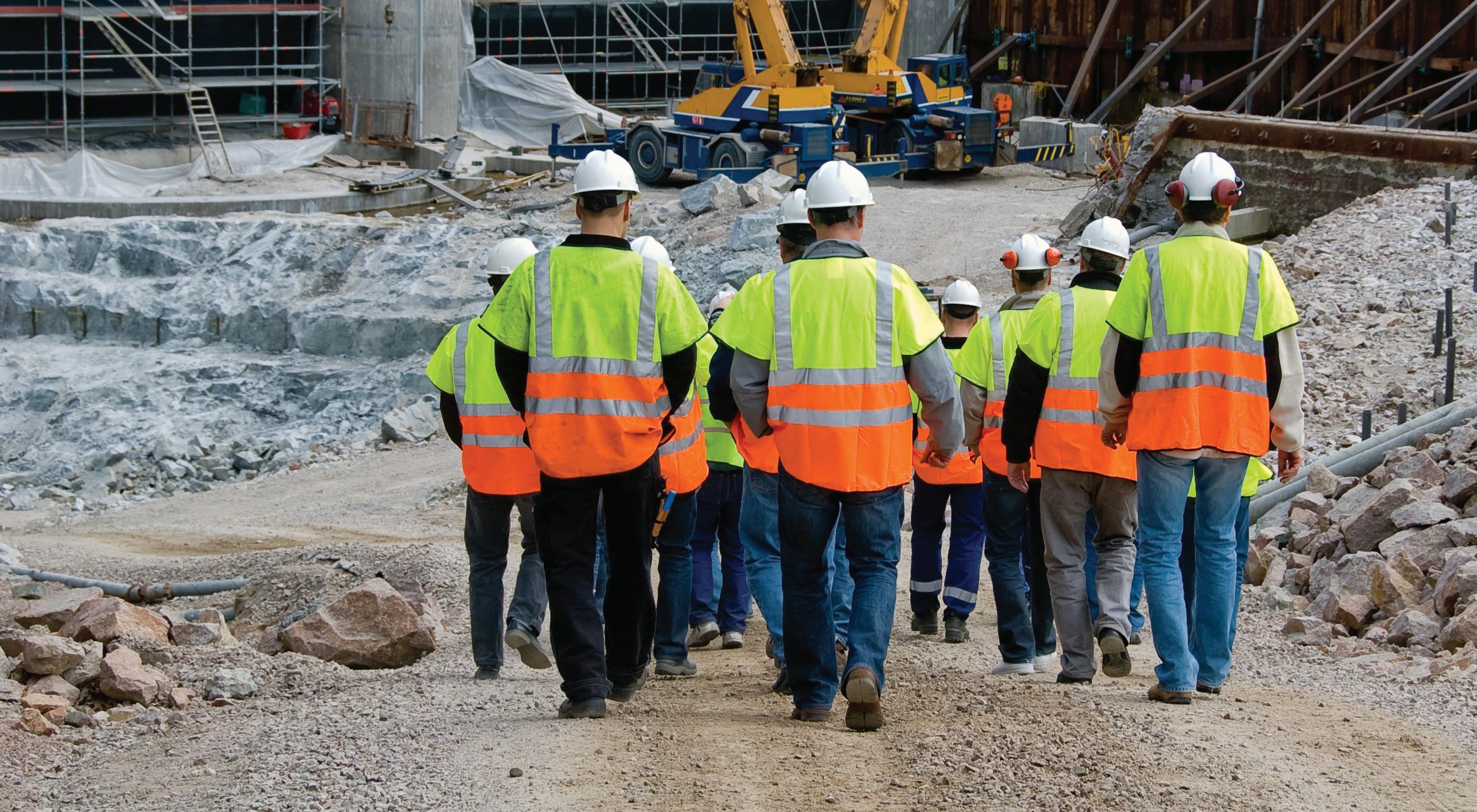
With a high demand for work and a shortage of workers, the underground construction industry is looking for solutions. Two solutions that are at the forefront of the discussion are more efficient HDD technology and new workforce development strategies.
THE LABOUR CRISIS
Demand for underground construction isn’t likely to subside any time soon. Remote work is here to stay for many industries. According to PwC research, 83% of employers say that remote work has been successful for their company and over half of employees would prefer to remain remote at least three days per week.
And as remote work continues so too will broadband installation. Legislative actions such as the Infrastructure Investment and Jobs Act, which will provide a $65 billion investment in the U.S. broadband infrastructure, will only drive demand for underground construction work higher. In fact, according to Grand View Research, the HDD market growth is expected to reach $14.86 billion by 2028.
In the near term, the global HDD industry is expected to continue its growth as well. See Figure 1 for a breakdown of the Compound Annual Growth Rate (CAGR) of the global HDD market broken down by industry segment, courtesy of research by Underground Construction magazine. The telecom industry alone, with a 3.41% CAGR, would translate to an added 500 HDD units needed to match the growth.
Cory Maker, Ditch Witch, Perry, Oklahoma
2019-2024 CAGR Oil and Gas 0.62% Telecom 3.41% Water Related 2.14% Electric 1.52% Others
0.65%
Figure 1. The Global HDD market is expected to continue to grow from 2019–2024.
22 | NASTT-NW JOURNAL | Fall/Winter 2023 BACK TO CONTENTS
If the market grows by 500 HDD units in the coming years, contractors won’t have the skilled labour force required to operate those new units. According to the U.S. Chamber of Commerce, 33% of contractors report turning down work due to skilled labour shortages.
According to Sellenriek Construction Co, an underground construction company based in Missouri, they already are seeing the demand for up to six more crews than they currently run, but they cannot find the workers to staff those crews. Finding skilled workers is becoming increasingly difficult on its own.
One cause of the labour shortage is that young people continue to opt for careers outside of construction. Existing skilled workers are being promoted to crew leaders and high schoolers are not joining the underground construction industry to fill the aging workforce –leaving the industry with a void in skilled workers.
With a high demand for work and continued growth on the horizon coalescing with a labour shortage and a low influx of skilled workers, the underground construction industry is facing a crisis of lack of qualified personnel.
MORE PRODUCTIVE MACHINES
With the workforce shortage limiting the number of available skilled operators and forcing smaller crew sizes, manufacturers are designing machines to operate with smaller field crews, thereby helping contractors adapt. Particularly in terms of HDD machines, manufacturers are designing rigs for optimal durability, productivity, versatility and simplicity. By addressing these needs with their machines, manufacturers are helping contractors to minimize the impact of the workforce shortage on their operations.
Designs That Reduce Downtime
With limited crews and multiple jobs on the docket, time management has become essential. Manufacturers have addressed this pain point with durable, streamlined machine designs that promote uptime.
One specific example of a design innovation is machines with few or no service points. The Ditch Witch JT24 is one such machine. Without daily service points, HDD contractors can focus on drilling and completing projects without worrying about potential detriments to their drill. It is important to remember that even with a machine that is designed without any daily service points, it’s
important to follow recommended maintenance intervals listed in the operator’s manual.
Machine designs are also evolving to improve uptime by streamlining necessary maintenance tasks. For example, some machines are designed with manual overrides on hydraulic valve pumps to allow contractors to delay downtime and finish a job before standing down for rig maintenance, if necessary. This allows an operator to diagnose and understand the appearance of machine issue but override through the alert and continue to work.
Modern diagnostics are also helping make maintenance more efficient. Some machines not only alert operators to a problem in real time, but also take the diagnostics a step further and notify operators of exactly the correct manual override to push. This allows an operator to not only diagnose machine issues, but also safely override them and continue working – allowing for increased uptime when needed and maintenance to be deferred until during planned downtime.
Telematics is another machine solution that can improve uptime. First used in HDD machines as simple GPS locating technology to prevent theft, today’s telematics provide a centralized repository of information that can help workers make more informed decisions about machine maintenance. For example, telemetry data can reveal data on engine hours and fuel usage, which can help operators better plan when maintenance is needed. Telematics can also track data related to fuel and DEF
levels or battery performance, any of which can help workers identify if a machine is at risk for malfunctioning before it does. With these machine insights, contractors can avoid unplanned maintenance and keep their crews working throughout the day.
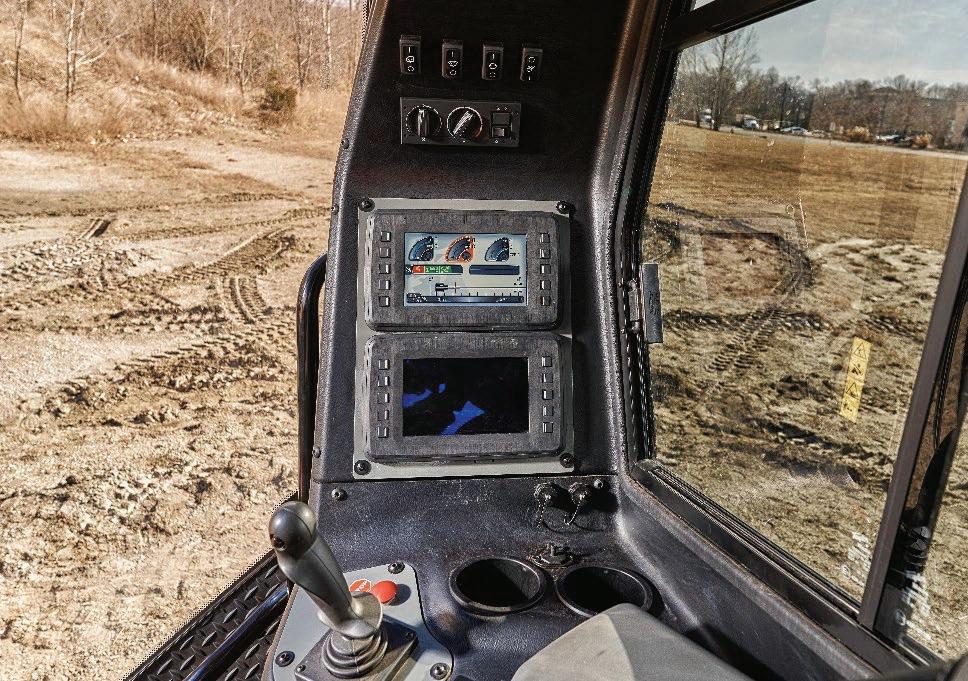
Advancements to Improve Productivity and Versatility
In addition to reducing downtime, contractors must also maximize productivity to succeed amid the workforce shortage. Machines are increasingly being designed with this in mind. Specifically, many modern HDD rigs are designed to optimize pullback, torque, spindle and carriage speed.
This is made possible by electrical and hydraulics advancements. For example, the thrust motor system on modern drills is designed for optimal efficiency so that operators can improve torque and speed. Drills designed with a direct drive SAI rotational motor can also improve overall machine efficiency by limiting the potential for parasitic power reduction. In other words, because the motor is direct drive, power won’t bleed off into different gear boxes on its way downhole and as a result output can be maximized downhole.
Many modern drills are also designed to be electric-over-hydraulic, improving overall machine efficiency.
Additionally, more versatile machines that offer higher horsepower in a smaller overall design can help HDD crews do more with less. For example, the
BACK TO CONTENTS NASTT-NW.COM | 23
Figure 2. The integrated display of the Ditch Witch AT32 identifies service points and service intervals for operators.
Ditch Witch JTAT32 is a mid-size drill at 19,220 lbs (8,718 kgs), but it has been designed with a 155-hp engine and the ability 4,200 ft-lbs (5694.4 Nms.) of outer rotational torque and 1,200 ft-lbs (1,627 Nms.) of inner rotational torque. Such higher-powered mid-size machines are made possible by more efficient components.

Running larger displacement pumps makes the other systems more efficient. Today, in these mid-size drills, larger engines can run with less noise from the engine and hydraulic pumps.
Power and productivity in a smaller drill opens up more opportunity to operators. For example, with fewer skilled workers in the workforce, there are fewer workers that could operate larger drills. With one mid-size drill that can take on more types of jobs, HDD contractors can better utilize the workforce they have.
Telematics can also support lessexperienced crews in difficult jobs conditions. Contractors can reference
telemetry data to see if a drill machine is being overused. Specifically, telemetry data will track the percentage of engine load that is being used. If data reveals that a machine is being overused, it could indicate that the operators may need assistance and instruction on how to more efficiently work in the conditions they are in.

Common Drill Designs
Perhaps no design development is more directly tied to the workforce shortage than the development of commonality across machines. With fewer skilled workers in the industry, scheduling equipment training can be a challenge. As discussed, uptime is essential with fewer crews and soaring demand for work. Spending an inordinate amount of time training workers on proper drill operation can lead to costly downtime.
To address this issue, some manufacturers have begun to design drills with commonality in mind. For example, Ditch Witch uses a single user interface
across its HDD line. This means the compact JT5 directional drill and the mid-size JT28 have the same control scheme and operator interface, so operators familiar with smaller drills can easily be called on to work on a job that requires a mid-size drill.
Manufacturers are also offering cross-vendor design commonality. For example, a Ditch Witch drill could be designed to match another vendor’s control and operation scheme.
A few specific examples of drill commonality include pipe handling automation and real time carriage and spindle feedback. To be specific, mid-size Ditch Witch drills all have the same automated, hydraulic control scheme for operators and the same encoder-based feedback. Similarly, pilot-operated drills such as the Ditch Witch JT5 have common controls as well.
When contractors use machines with commonality, operators only need to learn the operation on one drill, and crew leaders can avoid downtime by reducing the complexity of training. This improves the versatility of crews and allows existing operators to take on more jobs and help crew leaders fill demand with their existing workforce.
SUPPORTING THE WORKFORCE
Contractors, educators and industry organizations are working to solve the skills shortage by reducing burdens put on the existing workforce and putting a renewed focus on workforce development. One way industry is easing the jobs of existing workers is by advocating for field practices that support a less experienced workforce.
For example, Sellenriek Construction utilizes bore logs in the field. These logs track bores so operators can learn from past jobs and improve their technique. Many contractors also use bore mapping, which uses as-built maps in conjunction with bore logging to reveal how a bore was completed. This helps workers to complete future jobs on a jobsite, especially with a less experienced workforce.
Similarly, geographic information system (GIS) mapping technology has gained traction. GIS mapping and up-todate as-builts can help ease the burden of a stretched workforce by having an organized collection of underground environments that contractors and locators can reference. Manufacturers have assisted here as well. Some HDD
Figure 4. GIS mapping and up-to-date as-builts – such as these courtesy of Subsite Electronics – can help improve jobsite efficiency and reduce the risk of utility strikes.
24 | NASTT-NW JOURNAL | Fall/Winter 2023 BACK TO CONTENTS
Figure 3. The JTAT32 is a mid-size directional drill designed to offer up to 4,200 ft-lbs (5,694.4 Nms) of outer rotational torque and 1,200 ft-lbs (1,627 Nms) of inner rotational torque.
guidance and locating technology now comes preprogrammed with GPS mapping technology that automatically collects information on underground utilities and translates that into a map. It should be noted that while GIS mapping and as-builts should be referenced by contractors to improve the locating process, but should not replace the need for actual SUE surveys.
Contractors such as Sellenriek have advocated the growth of GIS maps, citing how it can improve jobsite efficiency –especially for locate technicians – and reduce the risk of strikes.
Industry leaders are also striving to change the perception among young people that the underground construction industry is not a viable career. This is a complex issue that begins with factors outside of the industry.
According to a 2020 survey commissioned by StrataTech Education Group, 73% of surveyed parents and students believe high schools promote a four-year university education, while only 32% believed high schools promote a trade- based education. One-third of high school students also reported a hesitancy to pursuing a trade-based education because they don’t understand the options available. And according to a 2020 survey by bigrentz.com, only 16% of surveyed Americans believe that trade-school will lead to higher-paying jobs.
Contractors and underground construction industry leaders are now working to show potential incoming workers that underground construction jobs are a high-tech, safe and viable career path.
One way that contractors are doing this is by relying more heavily on virtual reality (VR) and simulation training. Simulators create life-like training experiences that allow new and experienced operators to learn and practice their skills on a virtual HDD project. Many simulators offer a wide range of drilling scenarios, which allows new operators the chance to practice without worry of the costly consequence of a mistake. These VR simulators can even simulate different soil conditions and installation applications.
For younger generations of workers, simulators offer a high-tech example that the industry is moving forward. And anecdotal evidence from contractors like Sellenriek Construction reveals these simulators are appealing to the younger generations that often grew up playing video games.
Another strategy led by industry organizations – for example the Power and Communications Contractors Association (PCCA) – is to address the misconception that the underground construction industry isn’t a lucrative career. Targeted recruiting campaigns and education have been key strategies. Trade school programs that serve a labour pipeline for local contractors are springing up across the Midwest in particular. One example is the Utility Systems Technician Program at State Technical College of Missouri.
Case Study: Investing in the Next Generation of Workers at Missouri State Technical School
Ranked as the top community college in the United States by Wallethub in 2021, the State Technical College of Missouri’s Utility Systems Technician Program partners with manufacturers and the PCCA to provide a modern, encompassing utility construction education program. Attendees graduate in two years with experience in directional drilling, vacuum excavation, mini excavation and derricks, in addition to receiving a Class A commercial
HIGH-RESOLUTION INSPECTION OF PCCP FOR LOSS OF PRE-LOAD
Gone are the days when you had to guess if the broken wires in your PCCP pipe are caused by corrosion or Hydrogen Embrittlement.
PICA’s High Resolution PCCP scanning Tools can not only tell the difference, but can also tell you if the broken wires have resulted in “Loss of Pre-Load.”
Knowing if the pipes have lost their pre-load is important because if they have, they are “ticking timebombs” just waiting for a pressure surge to catastrophically fail.
Extensive work carried out by PICA, SG&H and Thompson Pipe Group for TRWD, TRA, GLWA in 2020, 2021 and 2022 proved that PICA’s RFT Tools can provide this extra information at no extra cost. Several pipes were also tested to failure to prove the results.

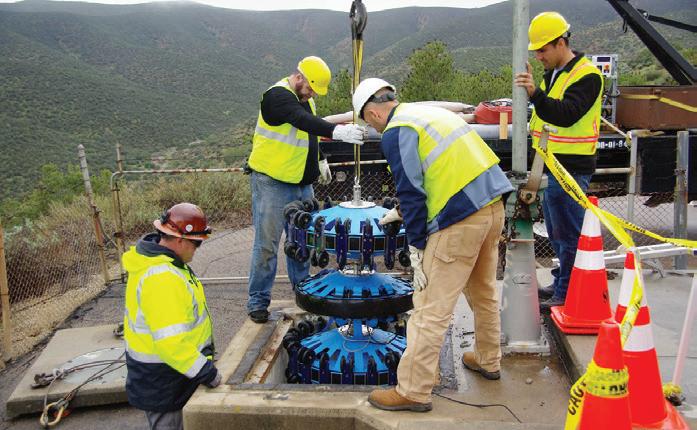
If you have concrete pressure pipe, even if it has been inspected by others, PICA wants to show you the PICA Hi-Rez advantage. Call us to reserve a date in our inspection calendar: 1-800-661-0127 or write to info@picacorp.com.

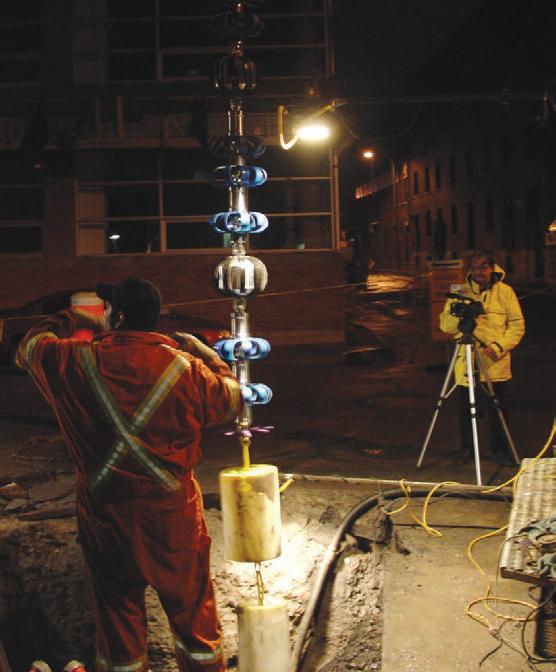

1 2023-09-06 1:41 PM
p-512.pdf
NASTT-NW.COM | 25 BACK TO CONTENTS
driver’s license. Students can also earn a Fiber Optic Technician certification through the Fiber Optic Association.
The program’s curriculum includes classes that familiarize students with all utility systems, but classes are particularly focused on broadband, natural gas, oil and pipeline transmission, wastewater and water. The course work is centered on utility location, fiber optic technology and industry regulations. To keep the program consistently up to date with modern equipment and jobsite best practices, The Utility Systems Technician Program is governed by an advisory board of industry leaders and manufacturers that consistently update the program.
One of the key differentiators of the Utility System Inspection is that its students are ready to hit the ground running right after graduation. According to the program’s ‘180 Day Follow-Up Report,’ 100% of graduates since 2019 were employed. And according to the U.S. Department of Labour, graduates had a 2019 mean salary of $72,440.
Sellenriek Construction alone has over 70 employees that are graduates of the programs.
One of the key factors in this readiness is that students get real-world experience throughout the program. Students get hands-on experience on modern machines donated from manufacturers. To give students even more real-world experience, the program uses VR-simulators to allow students to experience different jobsite
conditions and troubleshoot as they would on a real jobsite.
The Utility Systems Technician program is now being used as a model for other programs across the Midwest. One of the most impactful benefits of these types of programs are designed to show prospective workers that not only are underground construction jobs lucrative, but they are rooted in modern technology and offer the vocational ability to make the world a better place.
SUMMARY
Solving the issue of ongoing worker shortages continues to be an industrywide effort. Manufacturers are working to improve the productivity and efficiency of existing jobs crews by designing modern machines that promote uptime, simplicity and versatility. Industry leaders and academia have also been working to rebrand the industry and provide education programs that funnel new skilled workers into the workforce. The workforce crisis is complex and fixing it requires the entire industry, from manufacturers to seasoned workers to industry leaders to educators, to come together.
REFERENCES
Detrow, S and Keith, T (2021) Here’s What’s In President Biden’s $2 Trillion Infrastructure Proposal, NPR, USA www.npr.org/2021/03/31/982908847/ biden-set-to-unveil-expansive-2-trillioninfrastructure-plan
Grand View Research (2021) Horizontal Directional Drilling Market Size, Share and Trends Analysis Report, Grand View Research, USA. www.grandviewresearch. com/press-release/global-horizontaldirectional-drilling-market
U.S. Chamber of Commerce (2021) Commercial Construction Index Q3, U.S. Chamber of Commerce, USA www.uschamber.com/infrastructure/ us-chamber-of-commerce-commercialconstruction-index-q3-2021
StrataTech Education Group (2021) Over 90% of Parents Would Support Child’s Choice to Pursue Skilled Trades Career, StrataTech Education Group, USA. stratatech.com/over-90-of-parents-wouldsupport-childs-choice-to-pursue-skilledtrades-career

Arabia, J. (2020) Survey: Trade School Perception Improves During Pandemic, BigRentz.com, USA www.bigrentz.com/ blog/pandemic-trade-school-survey
McCann, A. (2021) Best and Worst Community Colleges, WalletHub, USA
Association General Contractors of America (2019) ‘Eighty Percent of Contractors Report Difficulty Finding Qualified Workers to Hire as Firms Give Low Marks to Quality of New Worker Pipeline,’ Association General Contractors of America, USA.
Underground Construction, (2021) 23rd Annual Directional Drilling Survey: A Tale of Two Markets, Underground Construction, USA.
PwC, (2021) US Remote Work Survey 2021, PwC, USA. ww.pwc.com/us/en/library/ covid-19/us-remote-work-survey.html
Copyright 2023 by the North American Society for Trenchless Technology. Original paper distributed at the NASTT 2022 No-Dig Show. All rights reserved. www.nastt.org
Figure 5. The Utility Systems Technician Program is focused towards hands-on instruction for students that are interested in joining the underground construction industry, allowing them to make an immediate impact in the field upon graduation.
26 | NASTT-NW JOURNAL | Fall/Winter 2023 BACK TO CONTENTS

Opt for FORMADRAIN’S 100% no-dig solutions for laterals and spot repairs. Visit formadrain.com for more information. 1-888-337-6764 • Spot repairs up to 48 in. (1200 mm) in ø • Included: T and Y lateral connections • Low entry cost • 70+ satisfied installers in North America • Unrivalled technical support since 1994 ai1693574688167_FORMA-20835-Pub-NASTTTrenchlessJournal-Demipage-HR.pdf 1 2023-09-01 09:24 www.precisecrossings.com Spruce Grove, Alberta | P. (780) 962.6882 | Toll Free. (866) 962.6882 experienced in all types and sizes of crossings Environmental Sensitive Area Crossings Rivers | Creeks | Ravines certificate of recognition latest technology in navigation systems committed to safety and to our environment equipped with 110,000 lbs to 440,000 lbs capacity drills NASTT-NW.COM | 27 BACK TO CONTENTS

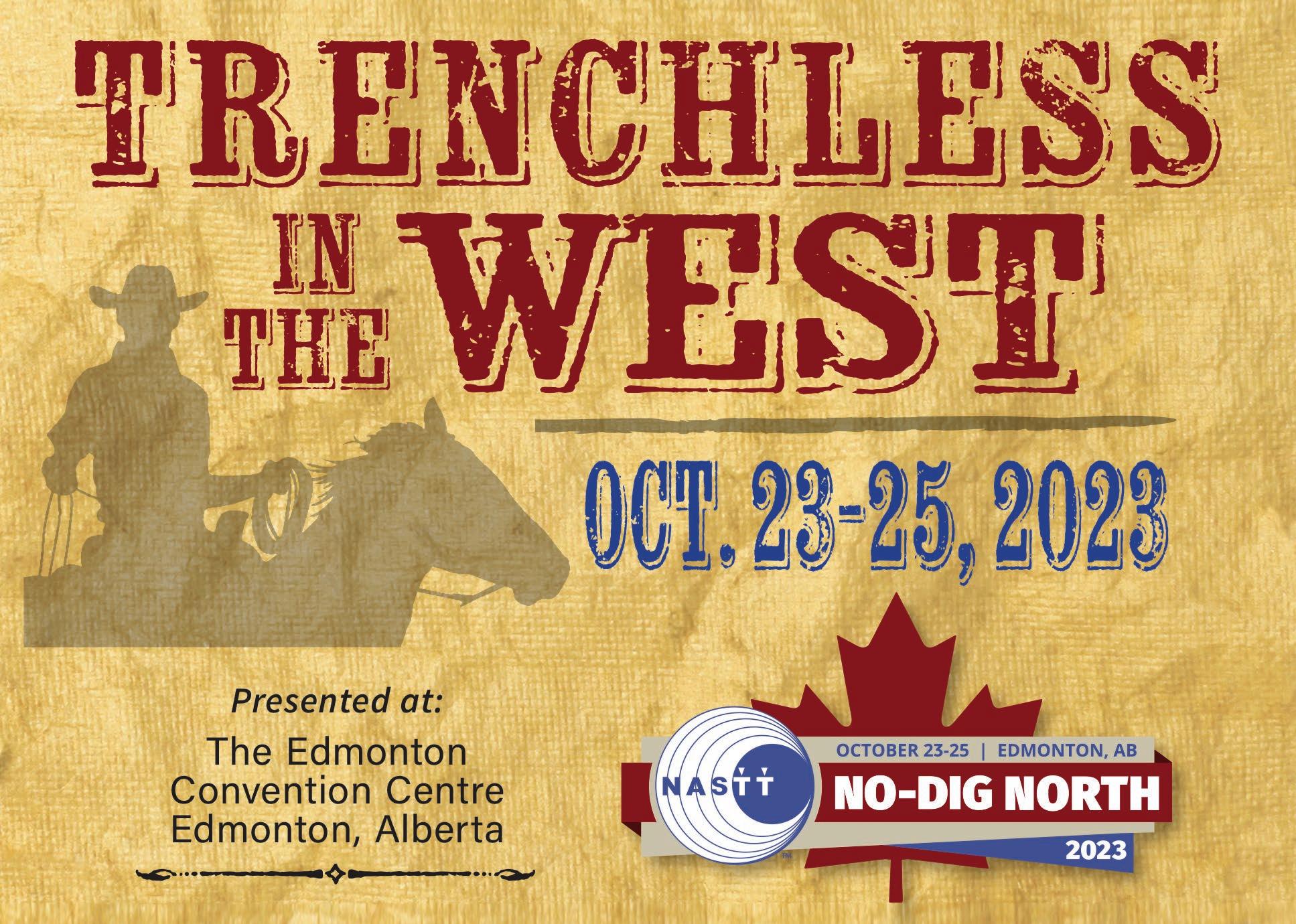


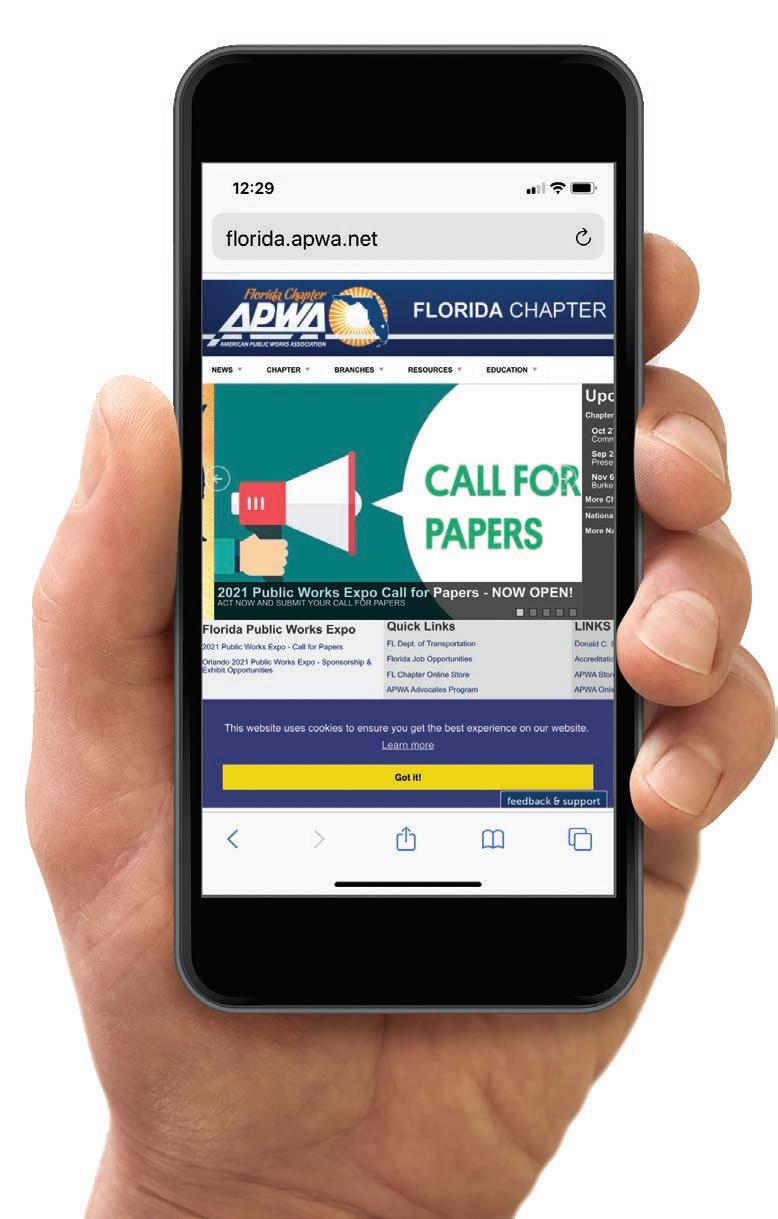
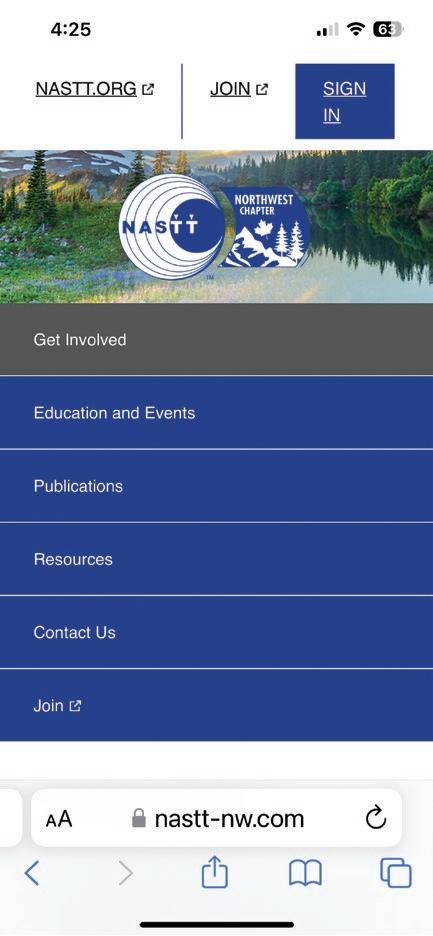
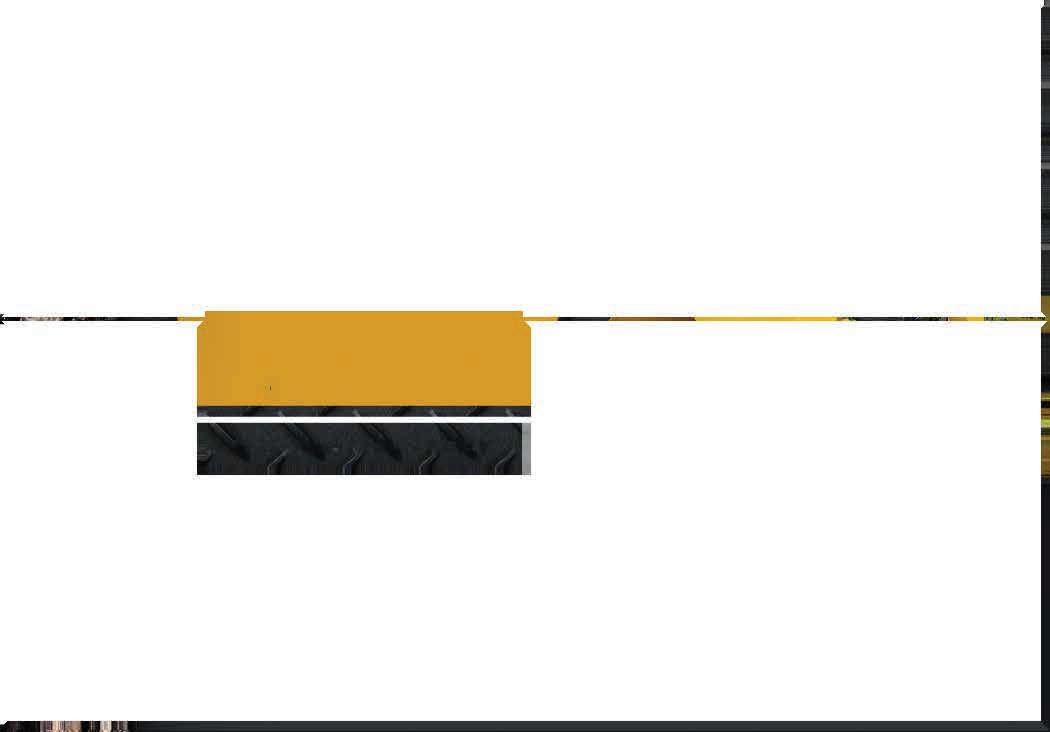

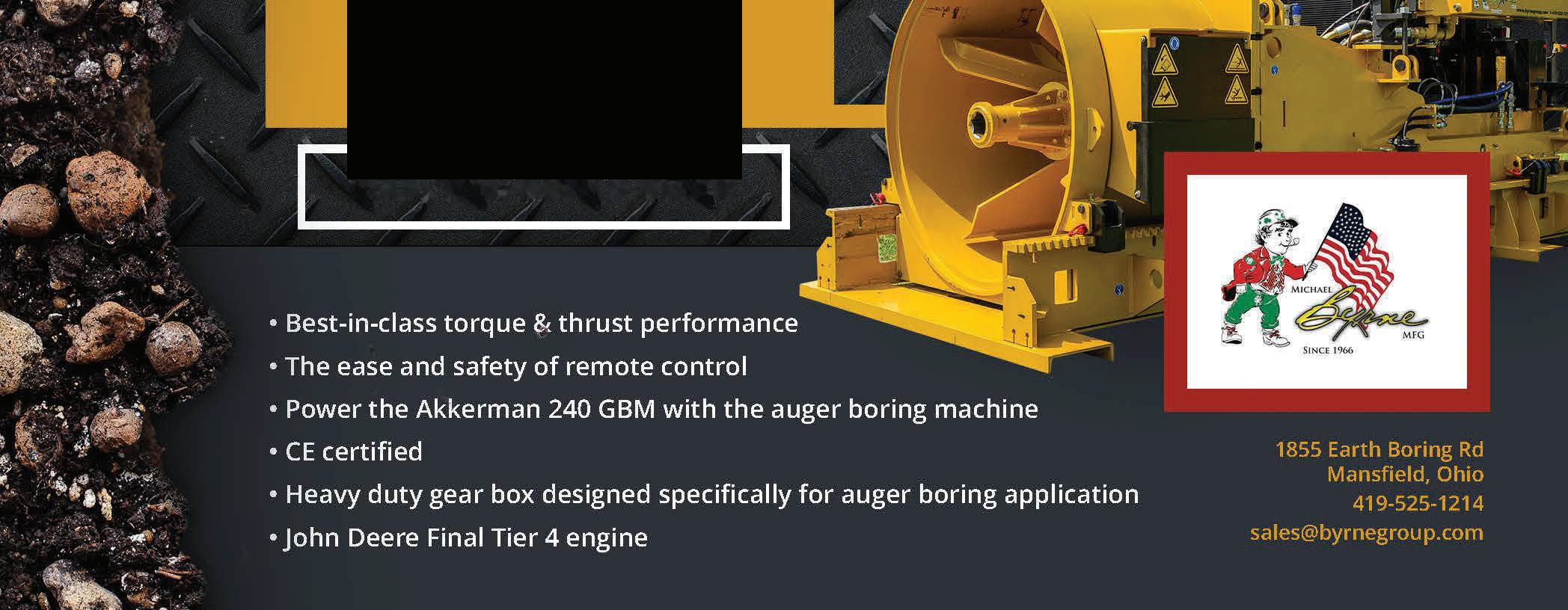
Edmonton, Alberta Find us online www.nastt-nw.com byrnegrou p.com No-Dig North Booth #228 28 | NASTT-NW JOURNAL | Fall/Winter 2023 BACK TO CONTENTS
ADVERTISER PRODUCT & SERVICE CENTRE
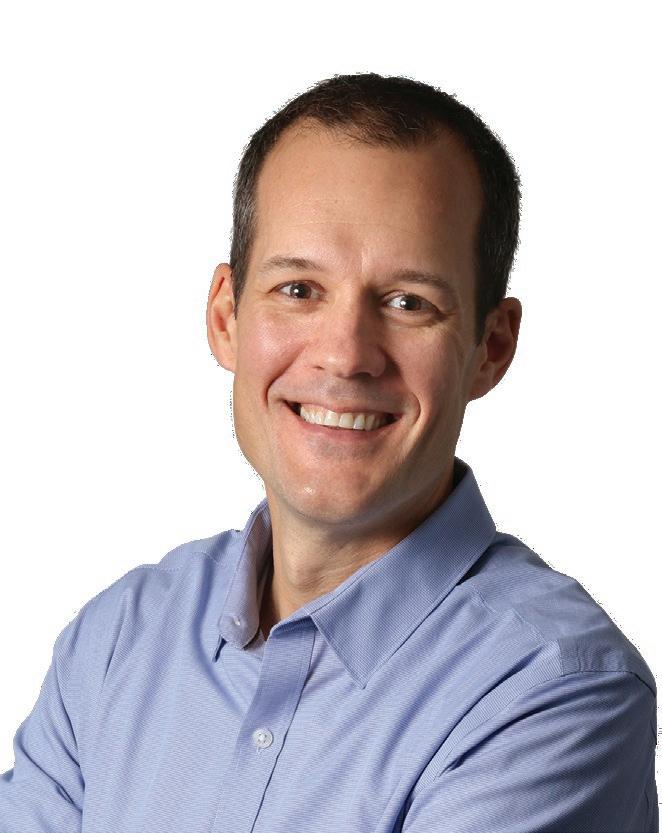
The NW Trenchless Journal is made possible by the companies below who convey their important messages on our pages. We thank them for their support of NASTT-NW and its publication and encourage you to contact them when making your purchasing decisions. To make it easier to contact these companies, we have included the page number of their advertisement, their phone number, and, where applicable, their website.

COMPANY NAME PAGE PHONE WEBSITE/EMAIL Aprotek USA, Inc. 8 408-628-4193 www.aprotekusa.com Associated Engineering 21 780-451-7666 www.ae.ca Brandt Tractor Ltd. 30 888-2BRANDT www.brandttractor.com Canadian Induracoat Corporation 2 855-652-0812 www.induracoat.com Formadrain, Inc. 27 888-337-6764 www.formadrain.com HDD Underground Solutions 8 780-340-8311 www.hddugs.com Insituform Technologies 31 800-234-2992 www.insituform.com IVIS, Inc. 5 780-476-2626 www.ivisinc.com MAPEI Canada 19 800-426-2734 www.mapei.ca Michael Byrne Manufacturing Co. 28 419-525-1214 www.byrnegroup.com Michels Canada 32 780-955-2120 www.michelscanada.com Muddruckers, Inc. 6 204-992-6833 www.muddruckers.ca PICA 25 780-469-4463 www.picacorp.com Precise Crossings Ltd. 27 866-962-6882 www.precisecrossings.com Uni-Jet Industrial Pipe Services 14 204-633-4879 www.uni-jetindustrialpipe.ca VIEW US ONLINE NASTT-NW.COM Chad Morrison • 1-866-985-9788 • chad@kelman.ca To reach the targeted readership of the NASTT-NW Journal please contact Chad: NASTT-NW.COM | 29 BACK TO CONTENTS
Unparalleled Power
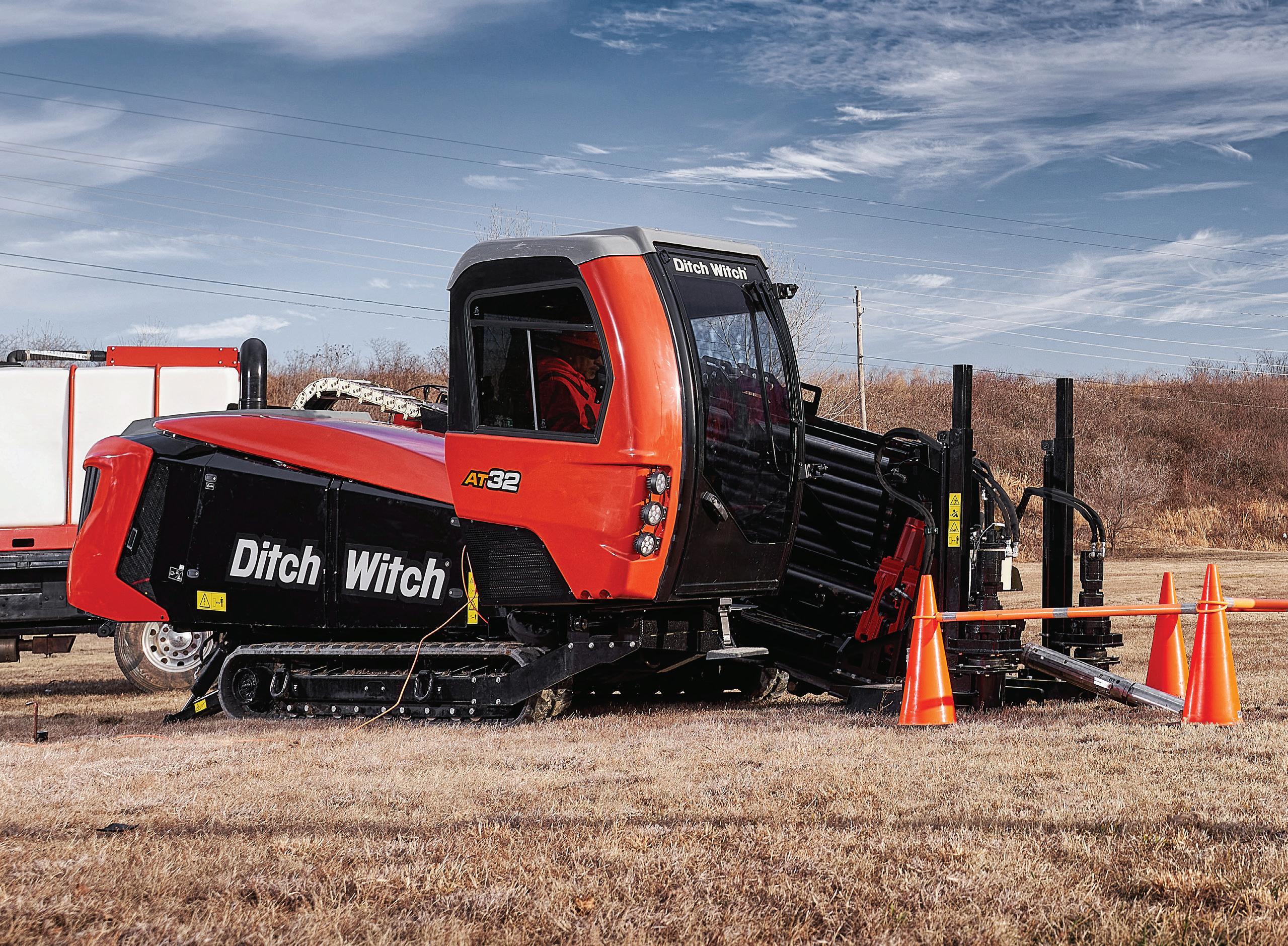
Superior Productivity
The

Unrivaled Support

brandt.ca 1-888-227-2638 FULL-SIZE POWER WITHOUT THE FULL-SIZE FOOTPRINT NEED FAST, FLEXIBLE FINANCING? WE DELIVER. Call TOLL FREE: 1-855-711-4545 or visit brandtfinance.com
its 155hp Cummins B4.5 Stage V diesel engine, 32,000lbs of thrust/pullback and 4,200 ft-lbs of rotational torque, even solid rock doesn’t stand a chance.
With
AT32
increased drill pipe capacity, now
450ft. of all-terrain
productivity.
features
allowing
pipe or 600ft. of dirt pipe with a reversible pipe box on-board, increasing
Bursting at the seams with power, the Ditch Witch AT32 is the next generation of all-terrain drilling, packing performance and strength into a sleek package.
Best of all, these machines are backed by Brandt; the best trained, most committed, 24/7/365 after-sales support in the business with 56 full service locations nationwide.








Michels Canada constructs safe, reliable underground infrastructure solutions for water, wastewater, transportation and energy needs for municipal and rural centres across Canada. Whether projects are Alternative Delivery, Design Build, RFQ/RFP or Bid/ Build, We Do That...& More.
Our infrastructure services include:
• Tunnelling and Microtunnelling

• Horizontal Directional Drilling
• Direct Pipe®
• Cured-in-place pipe (CIPP)
• Spray-in-place pipe (SIPP)
• Sliplining - FRP & GRP
• Maintenance hole, vault, chamber and culvert rehabilitation.
www.MichelsCanada.com
1102-16 Ave. Nisku, AB 1205 5 St. Nisku, AB 280-601 West Cordova St. W Vancouver, BC 379 Bowes Rd. Concord, ON Coxwell
Bypass Tunnel Toronto, Ontario






































 George Bontus, P.Eng. Chair, NASTT Northwest Chapter
George Bontus, P.Eng. Chair, NASTT Northwest Chapter


 Matthew Wallin, PE NASTT Chair
Matthew Wallin, PE NASTT Chair




































 This image shows a pile driven through a Reinforced Concrete Pipe. It shows the perils of not knowing where the underground pipes are. A Pipe Meander Survey may have helped.
This image shows a pile driven through a Reinforced Concrete Pipe. It shows the perils of not knowing where the underground pipes are. A Pipe Meander Survey may have helped.












































